Welcome to yet another trip report on the Japan Airlines Airbus A350-1000. Yes, this was my fourth flight on the JAL A350-1000 in a span of five months. Let me know if this gets boring and I’ll stop flying Japan Airlines immediately.
On a more serious note, this was a rarer instance of me taking the morning flight over the Pacific instead of the evening flight. Japan Airlines has two flights a day to New York:
- Flight JL6: Tokyo Haneda 11:05 departure, New York 11:00 arrival
- Flight JL4: Tokyo Haneda 19:45 departure, New York 19:40 arrival
I usually opt for flight JL4, as I prefer leaving in the evening. I’m able to take my time in the morning getting ready, and I find it easier to sleep on the plane due to the later departure time.
However, the fares for flight JL4 were through the roof when I booked this trip (partially my fault for booking at the last minute), so I went with the earlier flight JL6. I’m going to use this trip report to go over some of the differences in service, sleep, and jet lag I noticed taking the earlier flight this time.
At the Airport
The first challenge of this morning flight was getting to the airport. I had the choice of either dragging around my luggage on the train during the peak rush hour (with 3 transfers) or being stuck in rush hour traffic. I went with the latter:
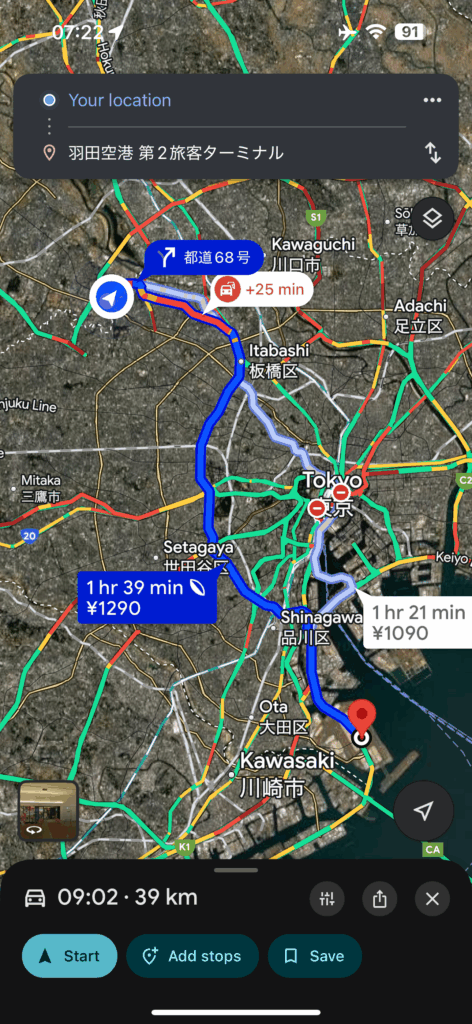
It seriously ended up being almost a 2 hour drive to the airport on this day. Moving forward, I’ll stick it up with the rush hour trains when I fly out in the morning.
It’s actually quicker to drive from where I am to Haneda when there’s no traffic; the best I’ve done in the past was 50 minutes. However, those are limited to quiet Sunday mornings or late nights.
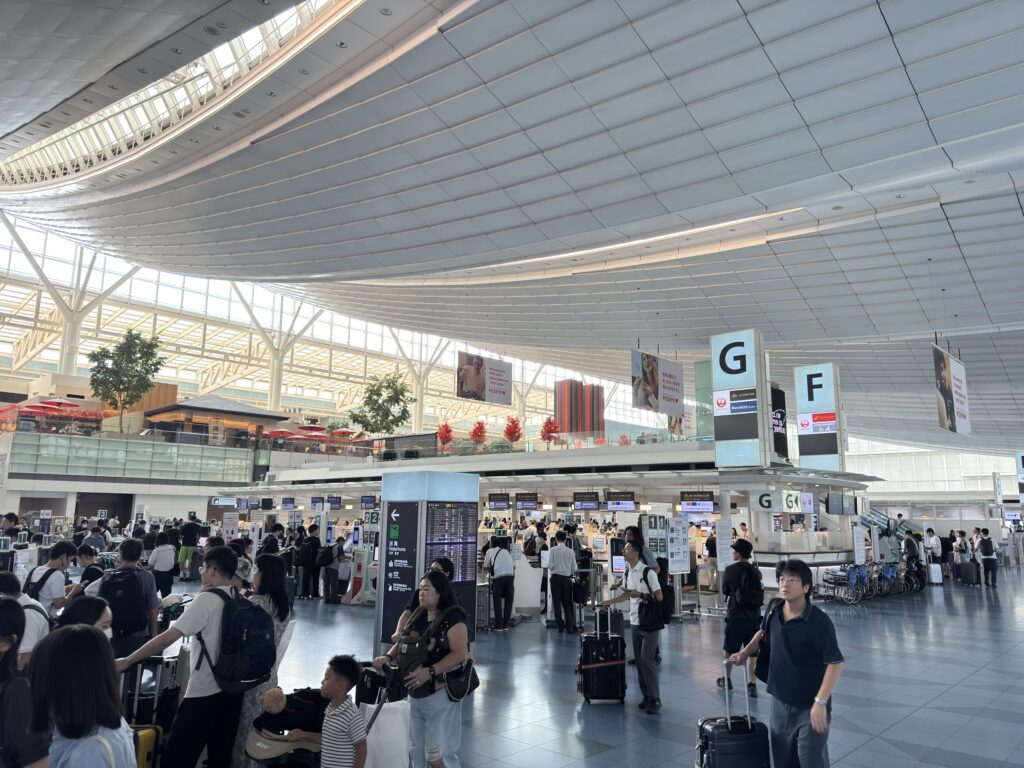
Haneda Airport was quite busy. The final summer trips seemed to be coming to an end.
I had trouble checking in both online and on the kiosk, and I had to see an agent. A couple of nice JAL agents quickly resolved my issue and got me my boarding pass. My dual nationality can make it a hit or miss at airports sometimes.
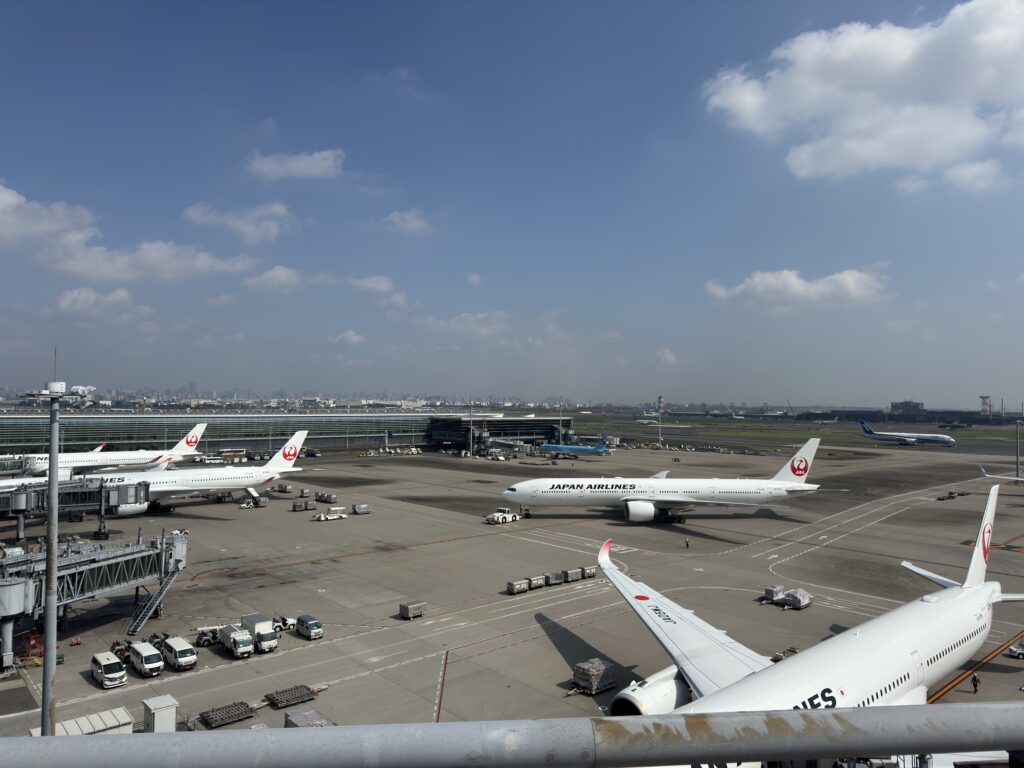
Before going through security, I stopped by the observation deck, also known as my favorite space in all of Haneda Airport.
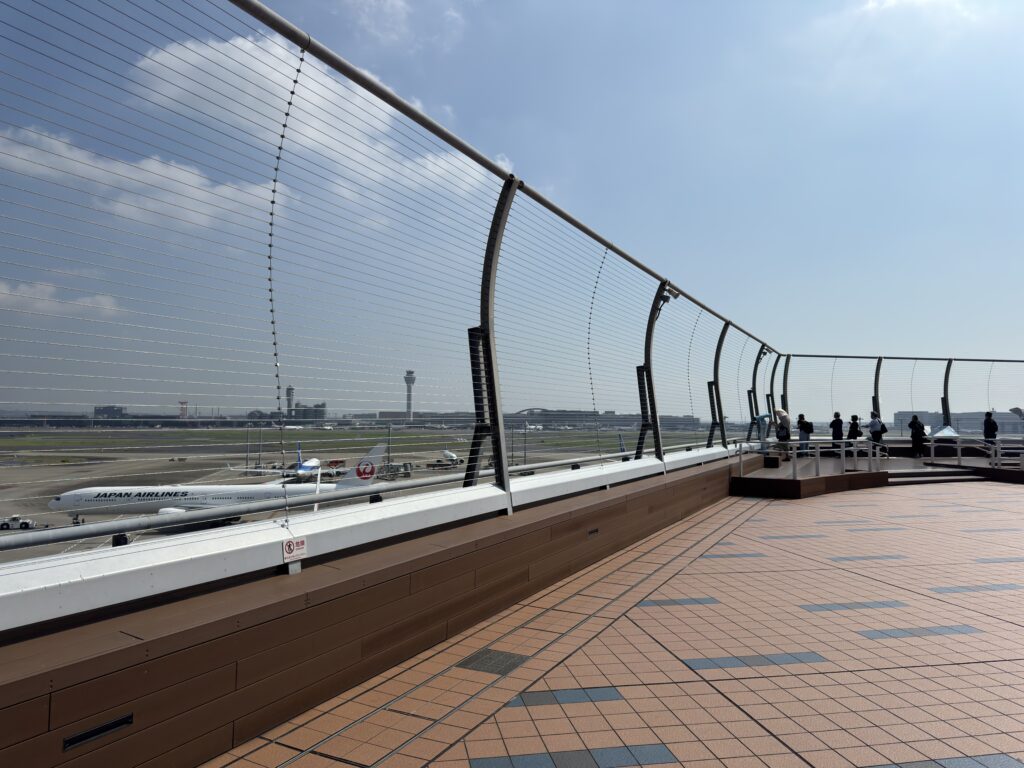
It’s on the 5th floor of Terminal 3 and is open 24 hours (the ones in Terminals 1 and 2 are not 24 hours). You get sweeping views of the ramp and runway 16R/34L.
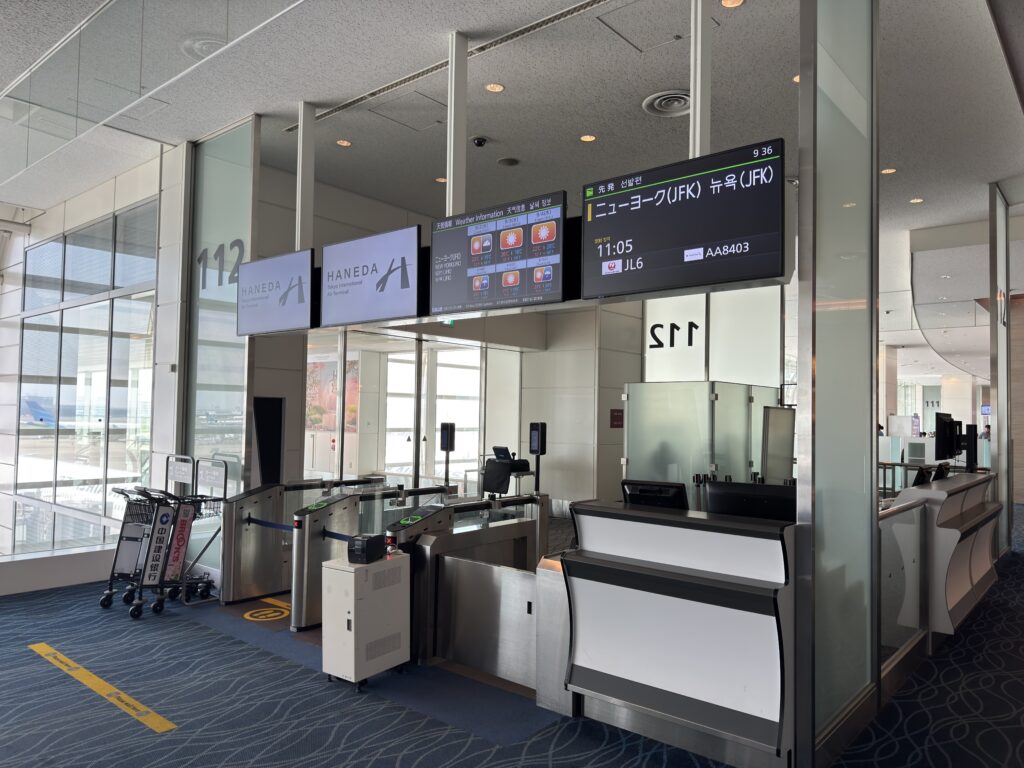
I had gate 112. The Japan Airlines New York flights almost always seem to depart from gates 111 to 114, which is convenient since they’re close to all of the Oneworld lounges.
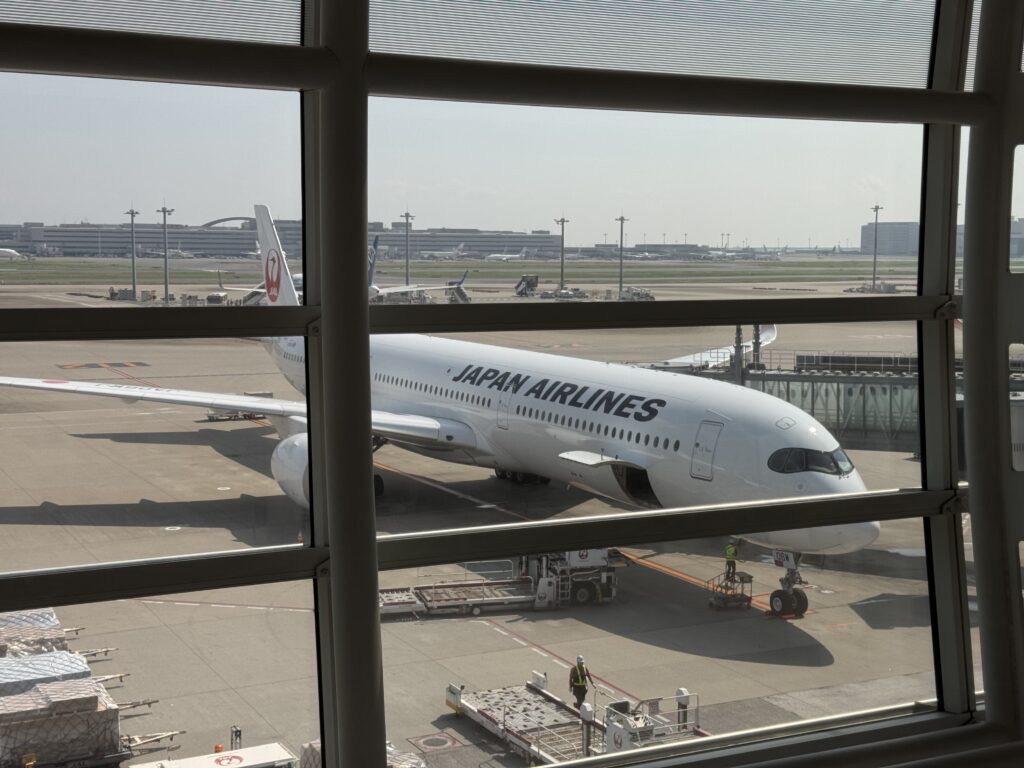
My aircraft was JA06WJ, an 11 month old (at the time of flight) Airbus A350-1000. According to the Flighty App, this was the youngest aircraft I’ve flown so far this year.
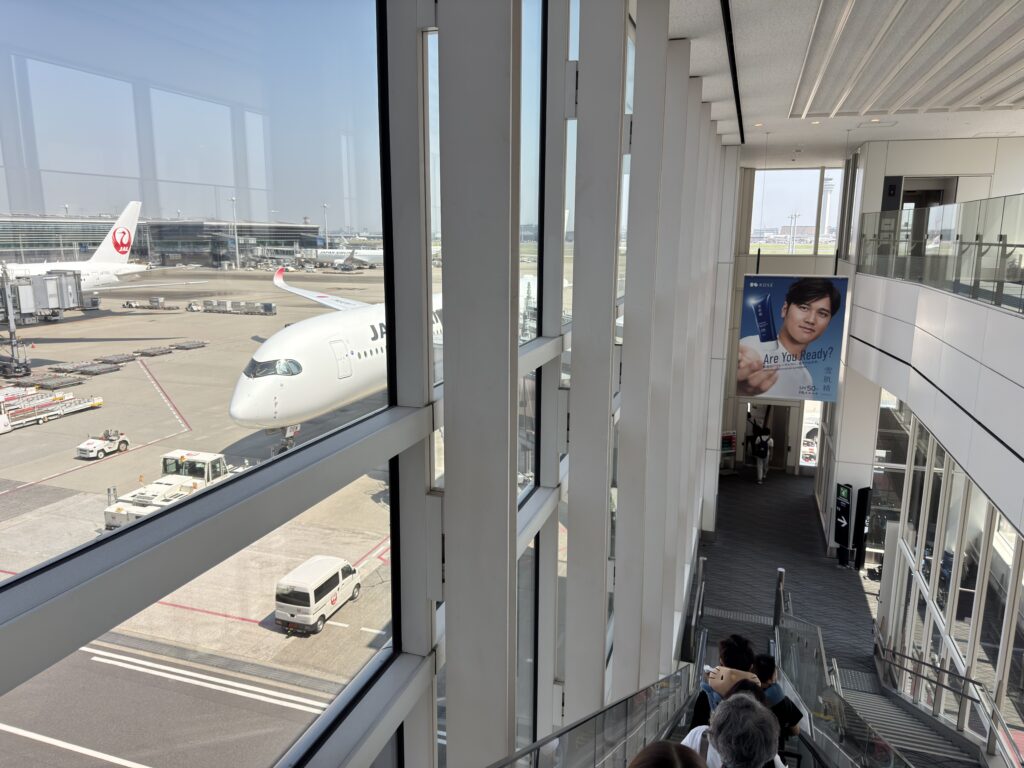
Boarding commenced and was completed in an impressive 25 minutes.
Related: Japan Airlines Boarded My A350-1000 in 25 Minutes, Here are my Observations
Boarding and Departure
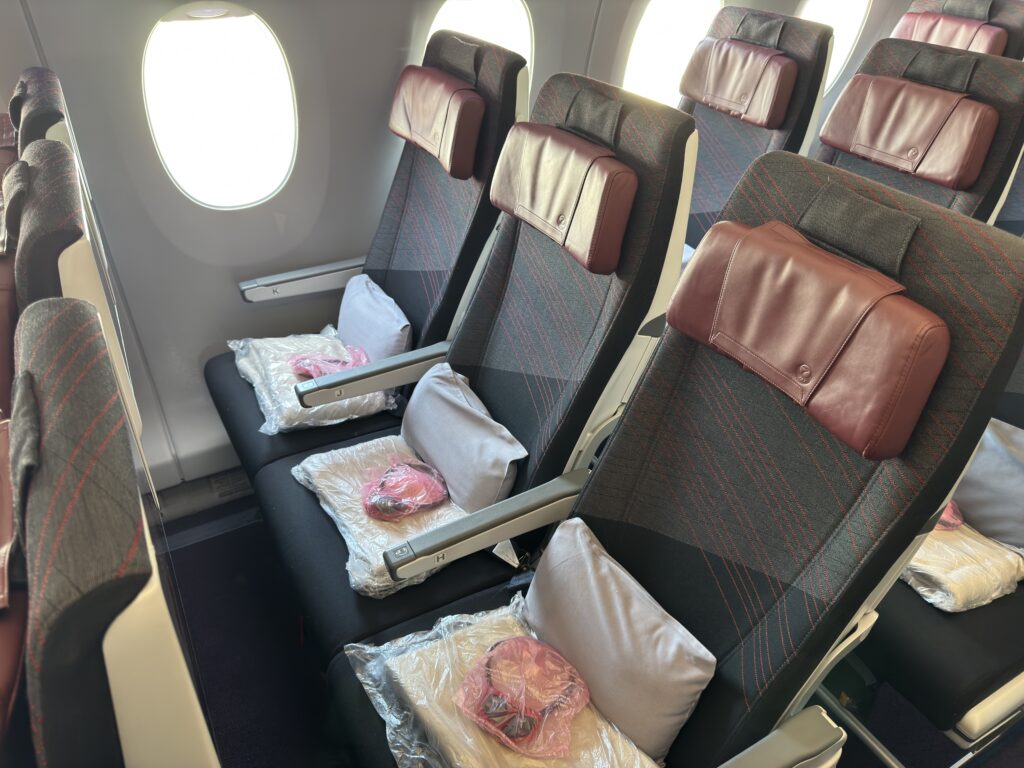
I got a window seat for the flight, seat 54K.
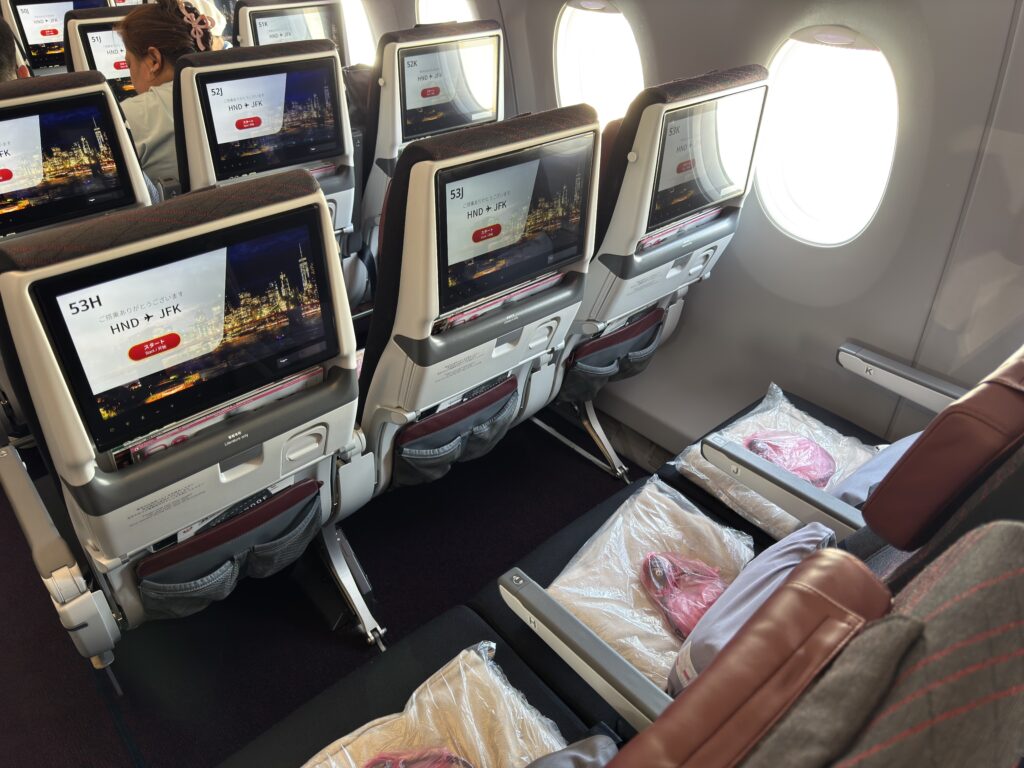
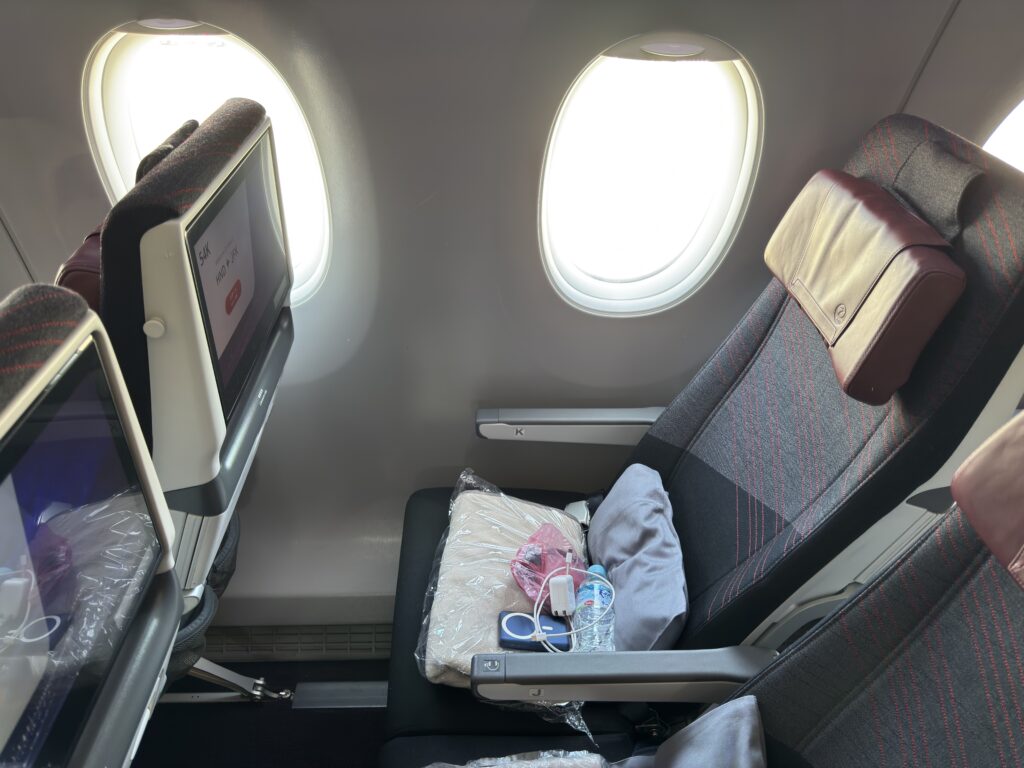
I’ve spent a lot of time in this seat since they debuted last year, and I find them to be very comfortable for an economy class seat. These are the Recaro CL3710 seats, which are also found on Singapore Airlines, Cathay Pacific, Delta Air Lines, and many others.
Where Japan Airlines’ CL3710s excel is the very generous amount of legroom, as all seats have at least 33 inches of pitch. This is almost equivalent to an extra legroom seat on a US carrier (Main Cabin Extra, Comfort Plus, Economy Plus, etc).
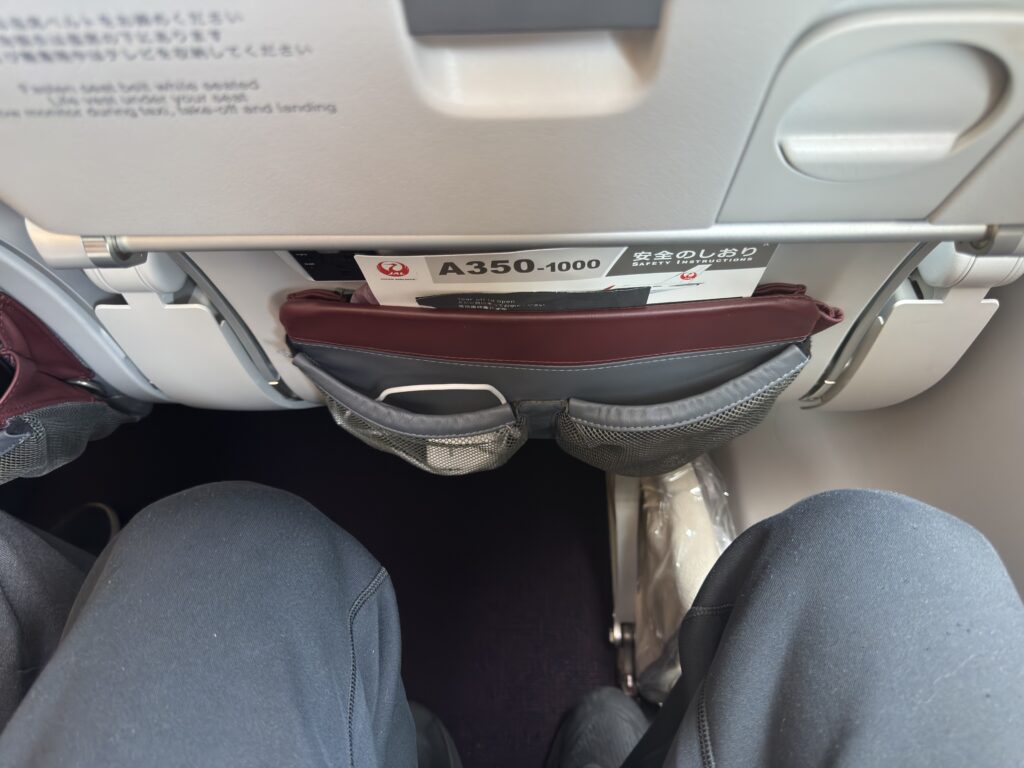
I never have any issues with space despite being 6’1/183cm.
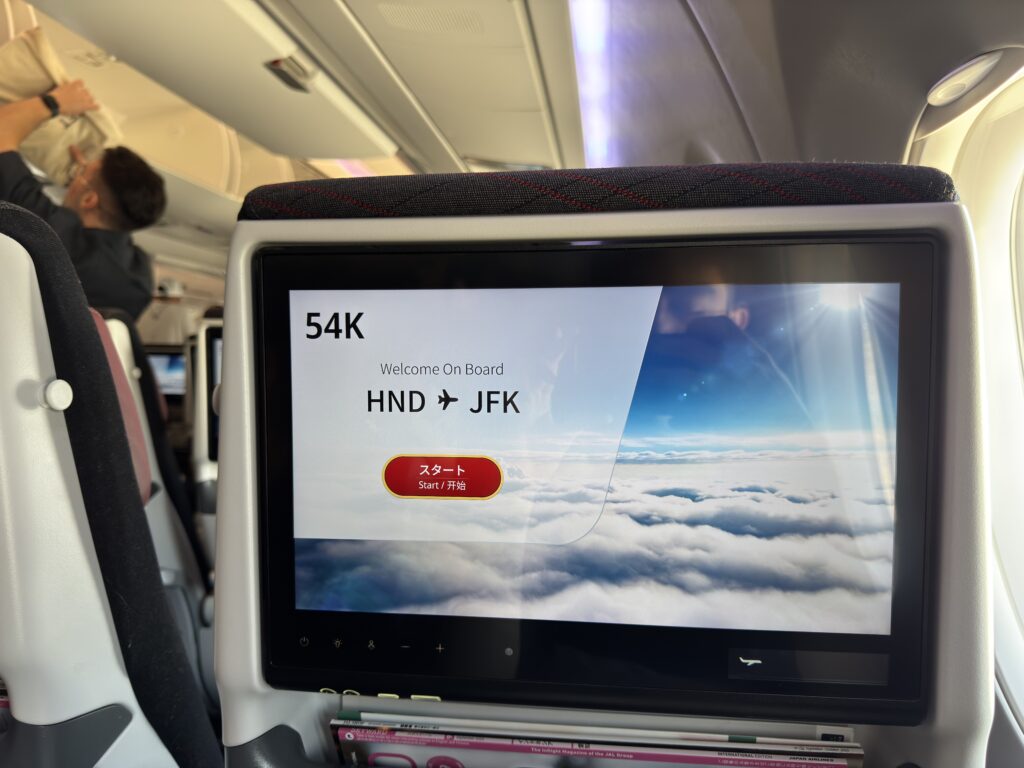
The 13-inch IFE screen also leads the industry.
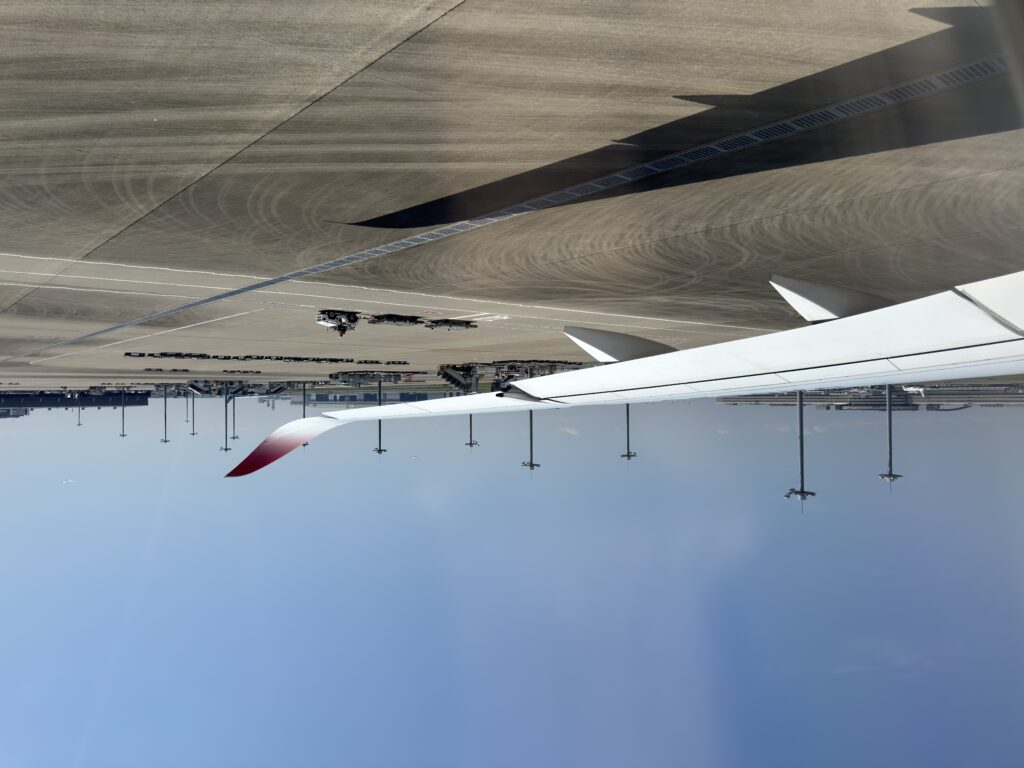
Taxi and takeoff were as routine as they get. The weather was clear, a gorgeous day to sit on the window.
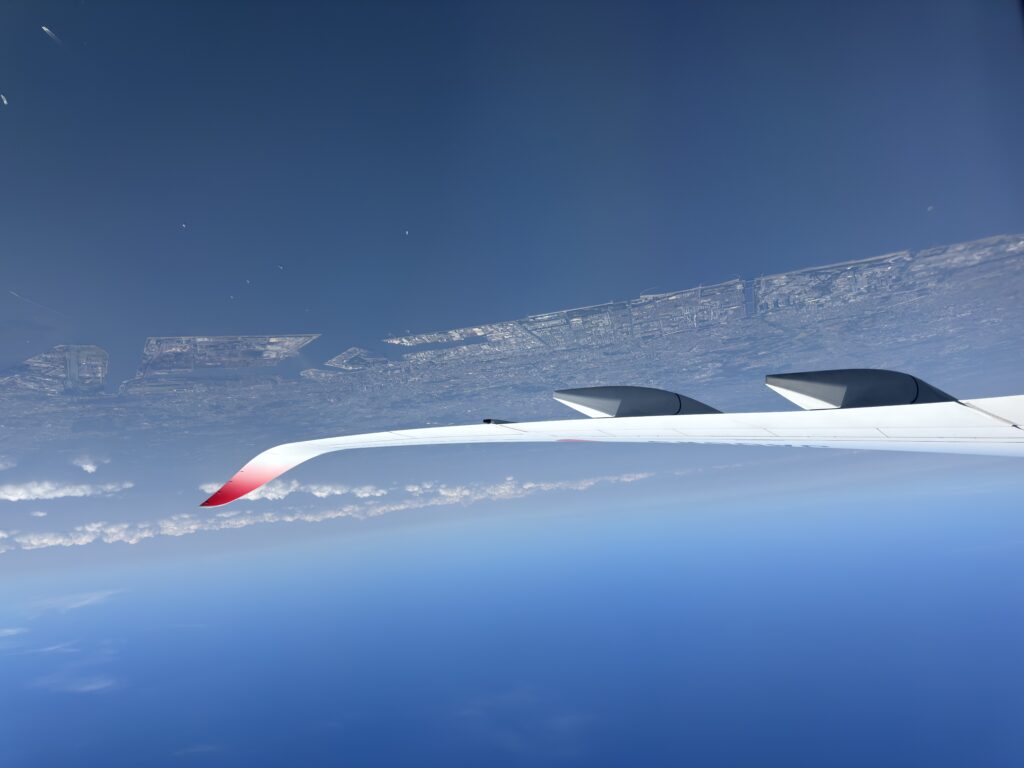
Onboard
Meal service began soon after takeoff. We first were provided with a wet tissue.
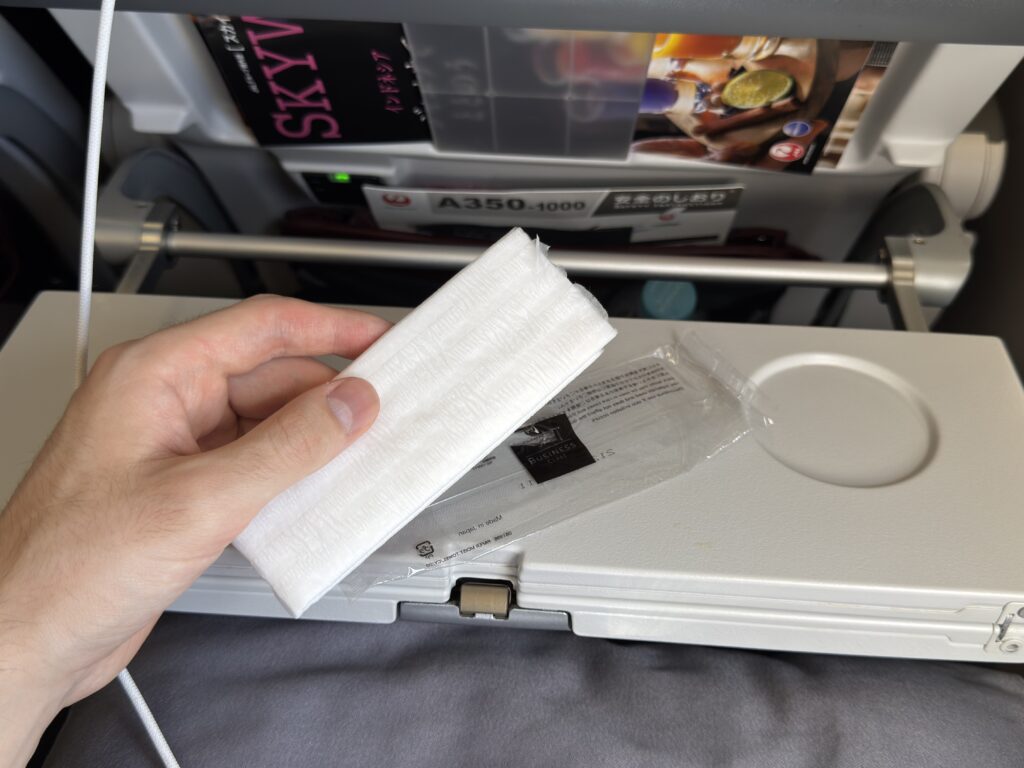
I connected to the Wi-Fi at around this time. The speeds were what I was used to on Japan Airlines; enough to send messages and browse websites, but not enough for social media and videos.
The flight attendants then came around for a beverage service. I went with my usual, the JAL original Skytime Grape and Peach mixed juice. Wild name, yes, but it’s really good.
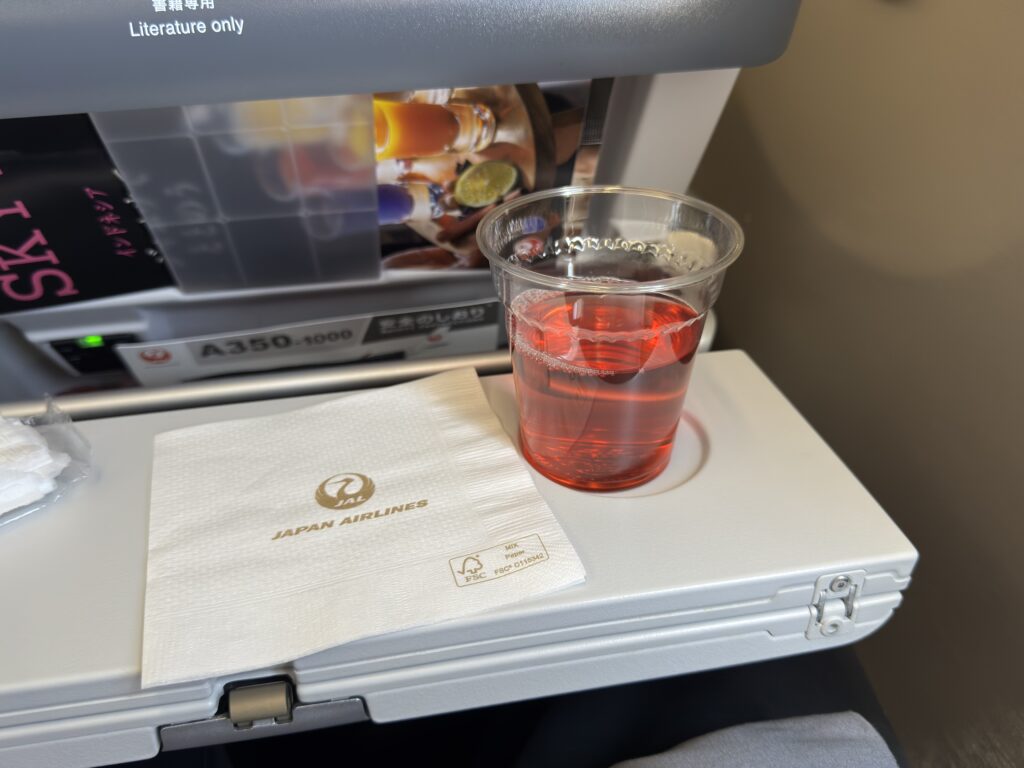
One feature I like on JAL’s A350s is the menus on the IFE screen. I went with the Japanese meal for this first meal.
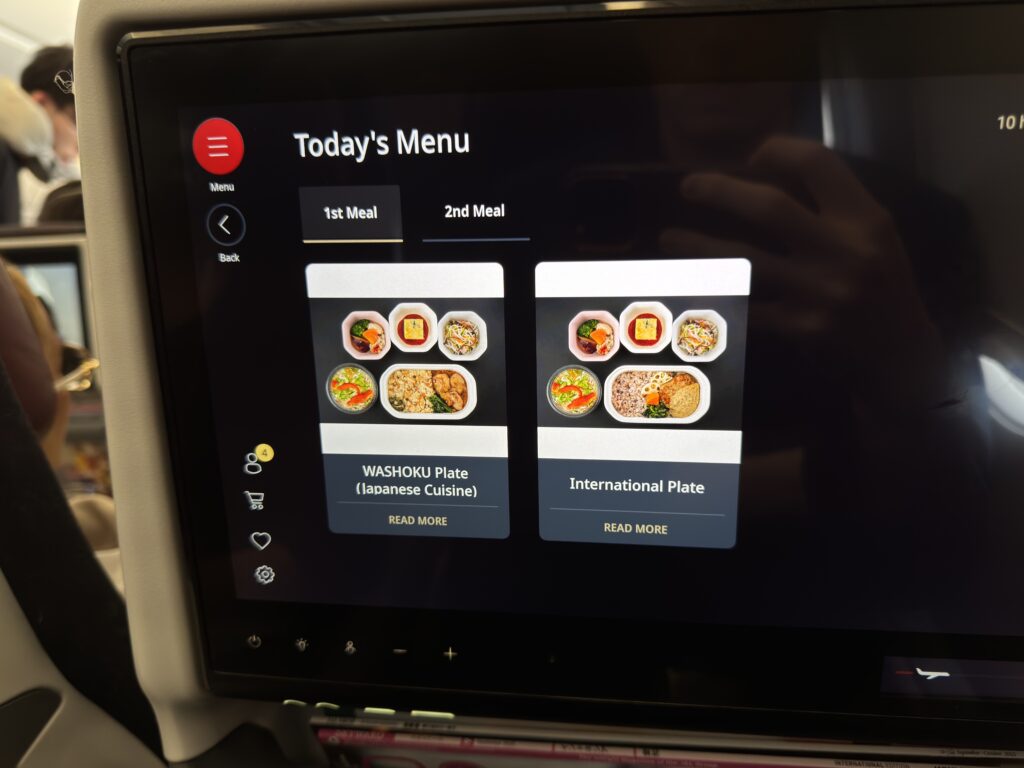
This was a good meal. The hot dish included rice and chicken, and vegetables, egg, and a salad came with it.
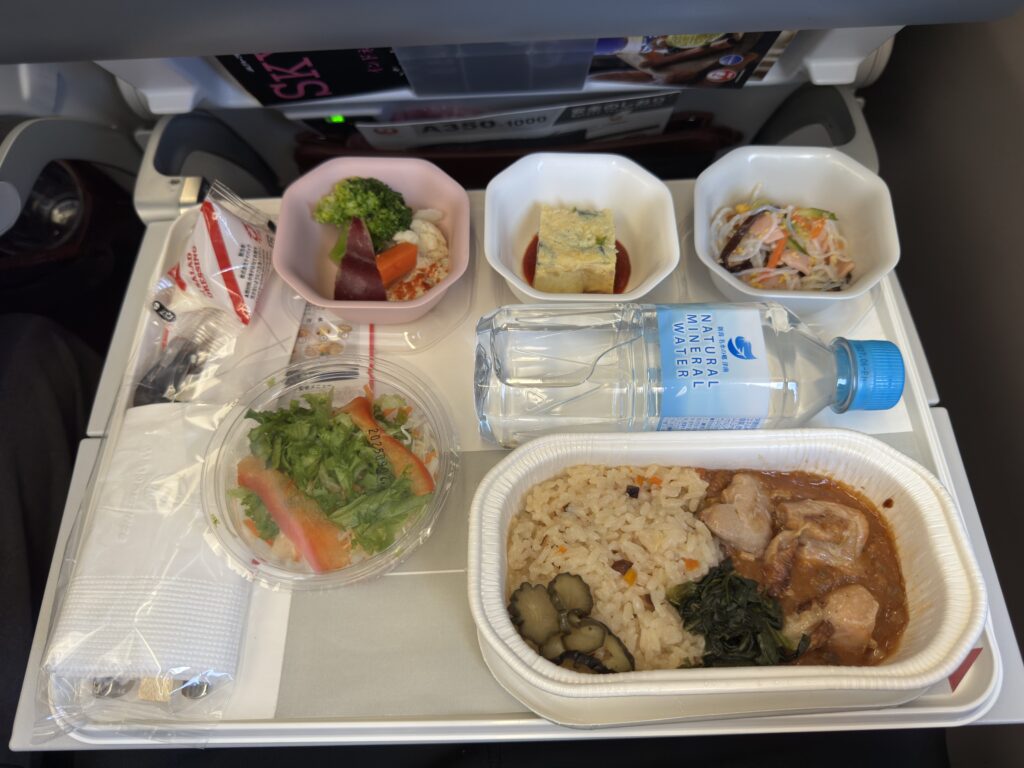
We were also served Häagen-Dazs ice cream moments later:
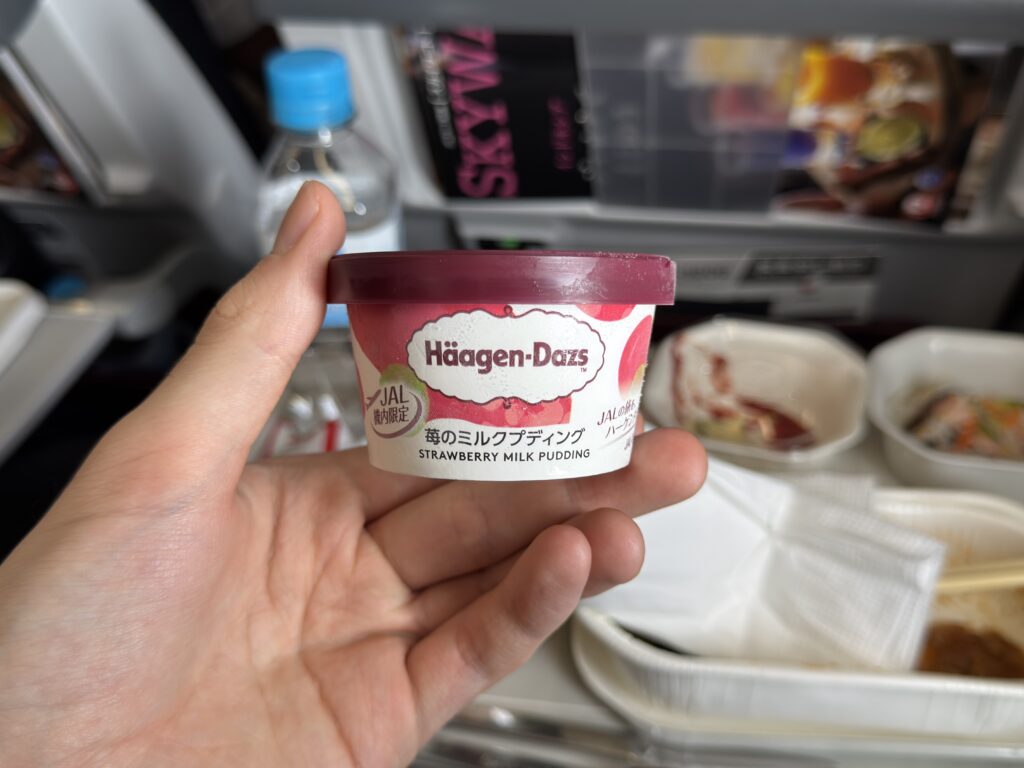
We did hit some moderate turbulence around this time, and the flight attendants had to pause meal service for a bit.
Spending Time Inflight
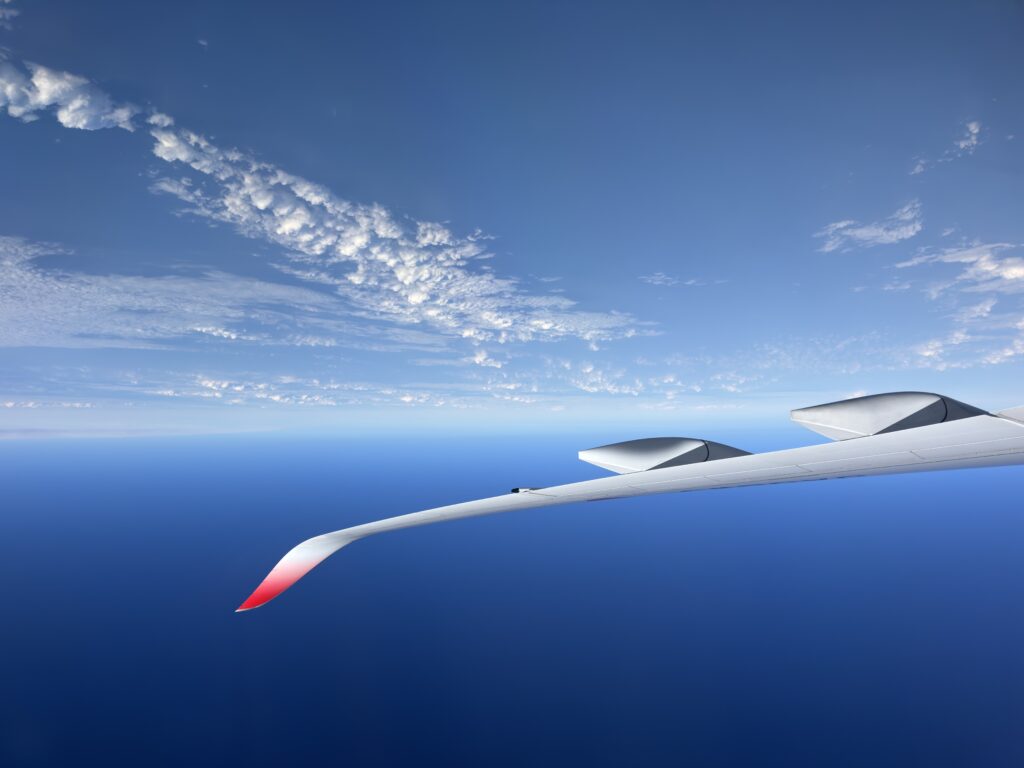
We cruised over the Pacific Ocean, heading towards Alaska.
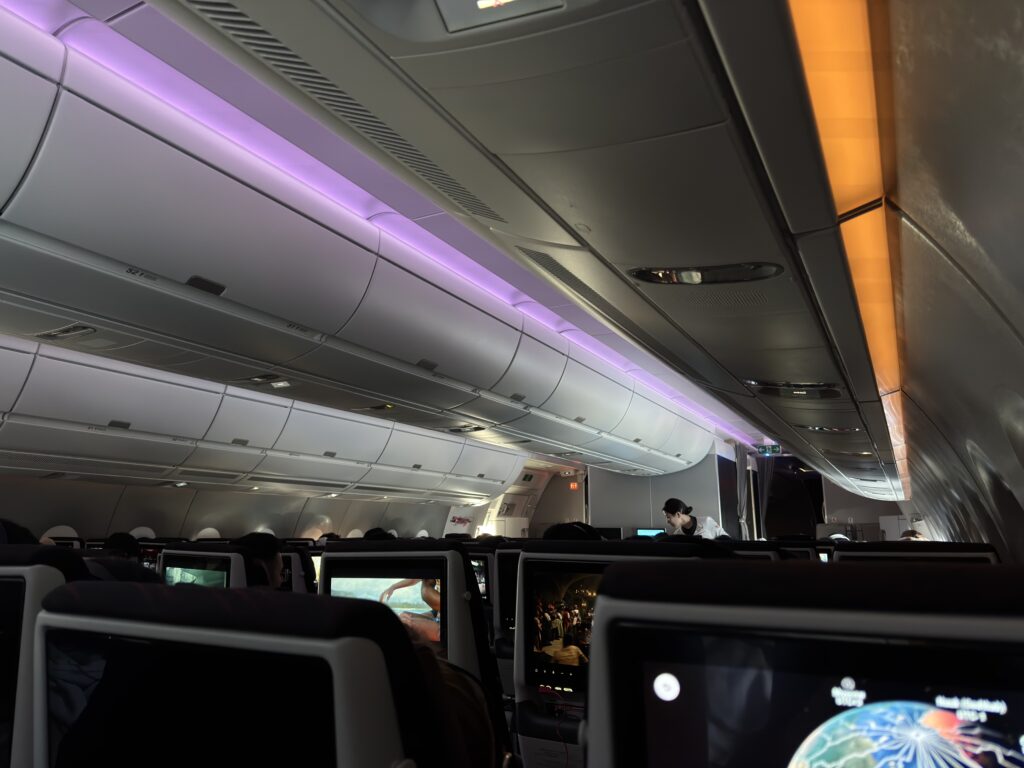
The lights dimmed, but the flight attendants did not require passengers to shut their window shades.
Check out this A350 winglet shine as the sun began to set on the other side:
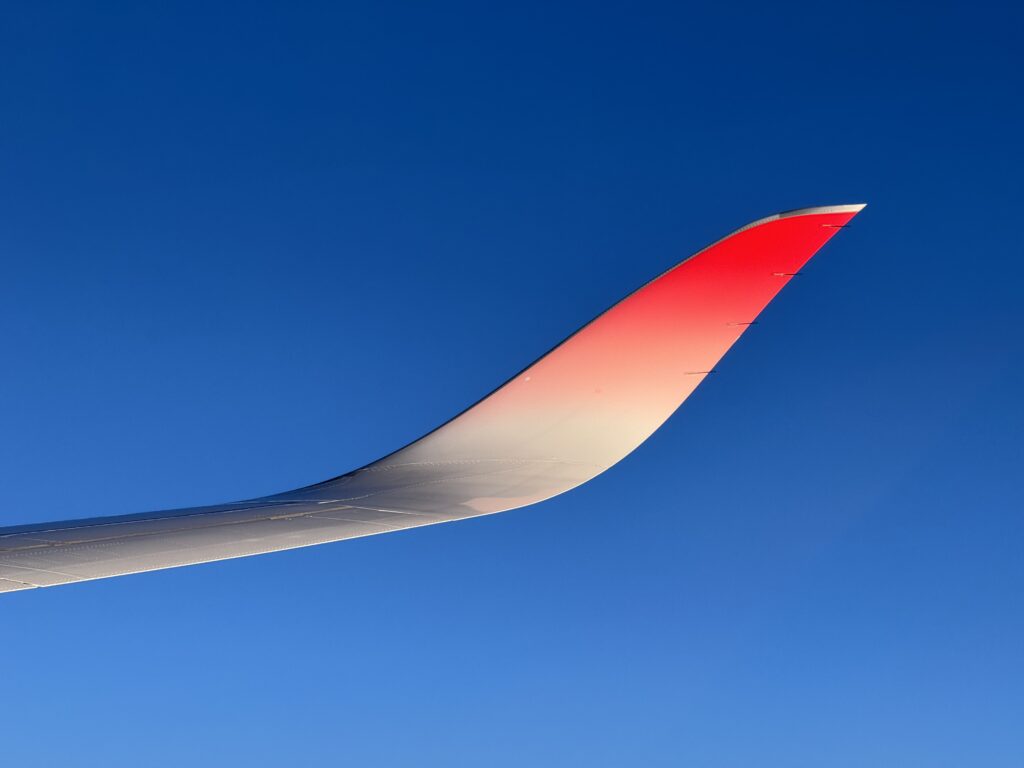
We were somewhere near Russia and Alaska during sunset. Being in this part of the world is always pretty wild to me.
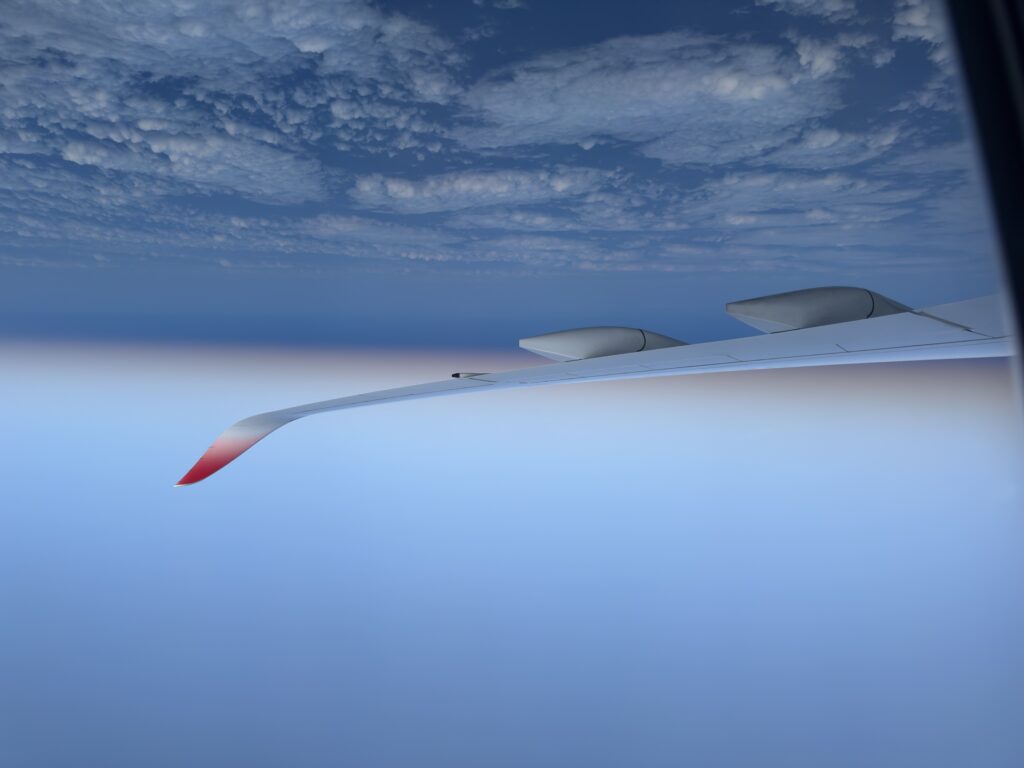
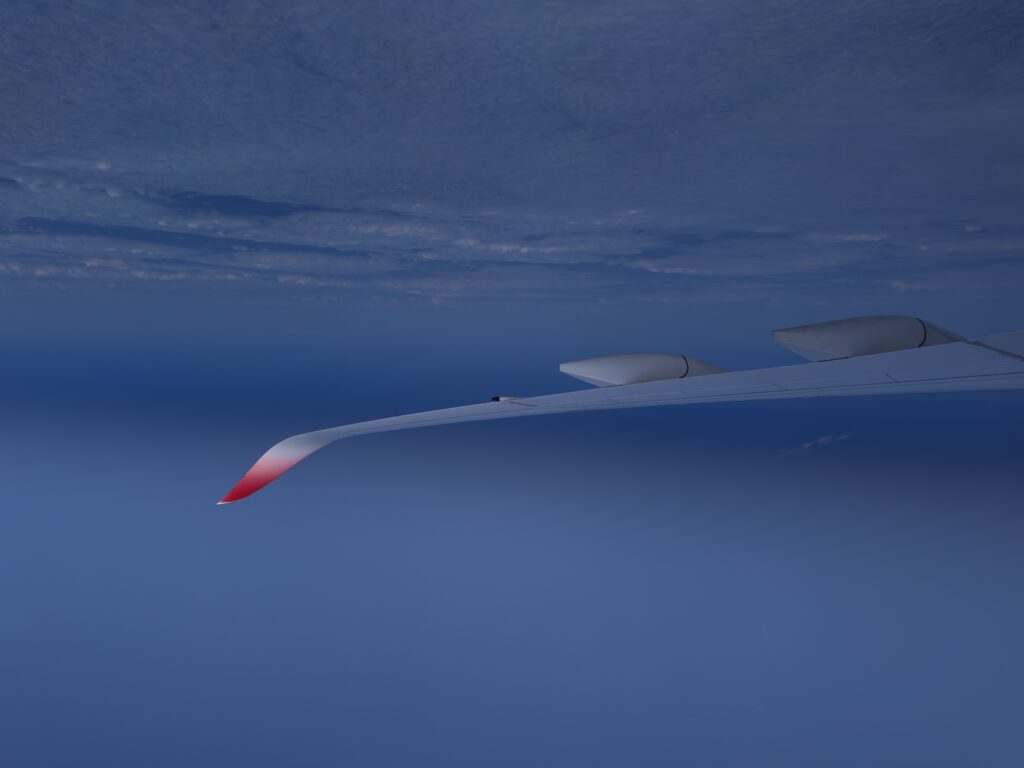
This is around the time when, normally, I’d be able to fall asleep on the evening flight to New York. However, it was still in the middle of the afternoon in Japan, and I wasn’t sleepy at all.
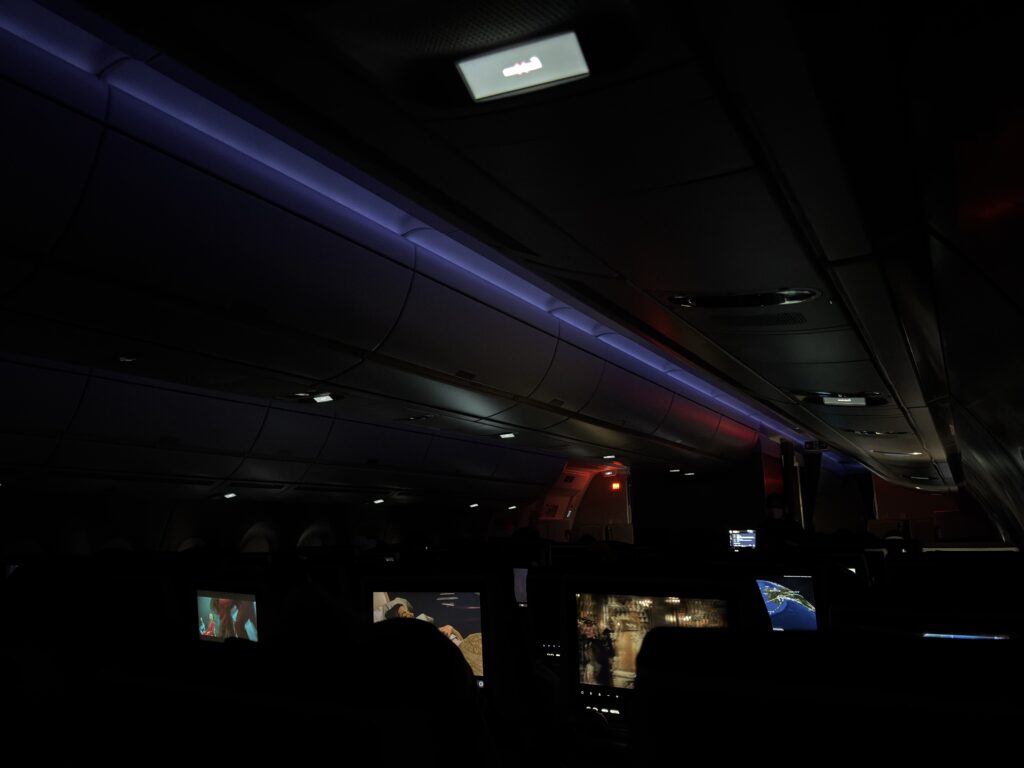
I do prefer the other flight, JL4, for being able to sleep on the plane. I did manage to get an hour nap in, so it wasn’t all too bad.
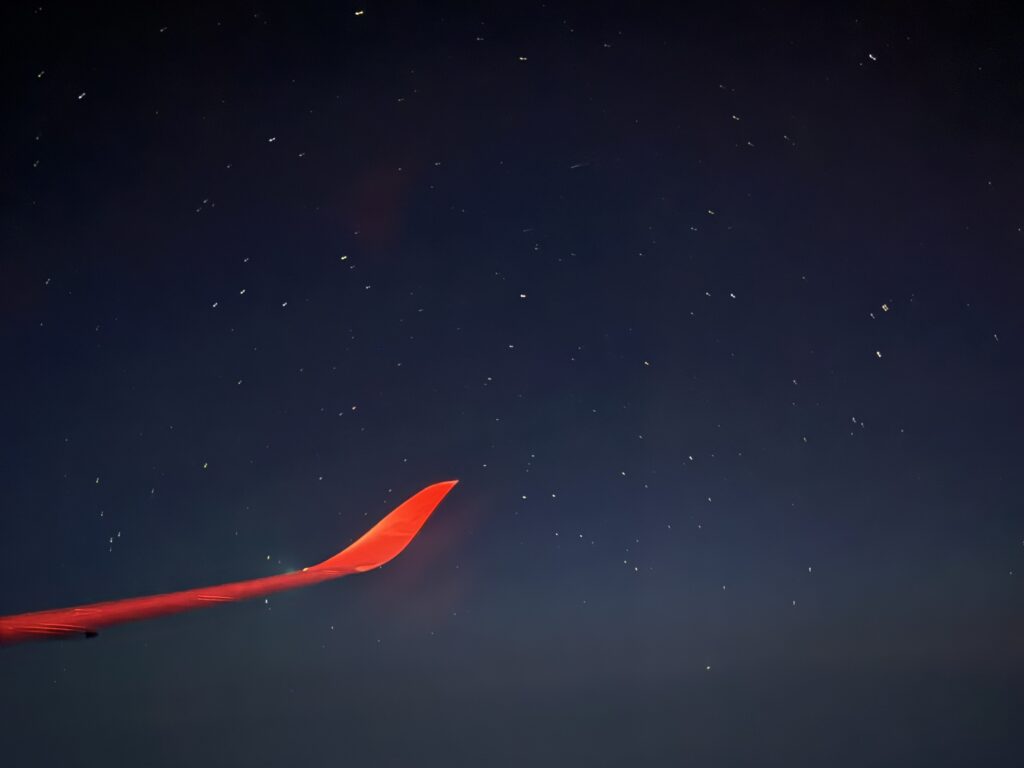
The cabin lights turned on about halfway through the flight. It was time for the midflight snack.
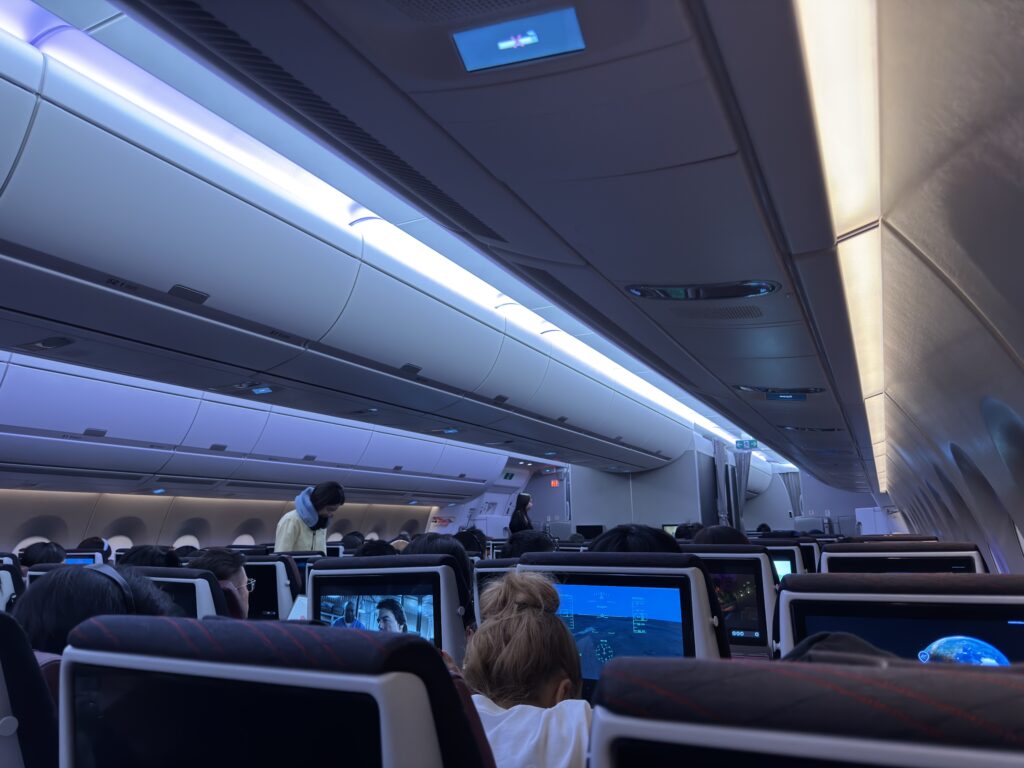
We were served two apple brioches and a beverage:
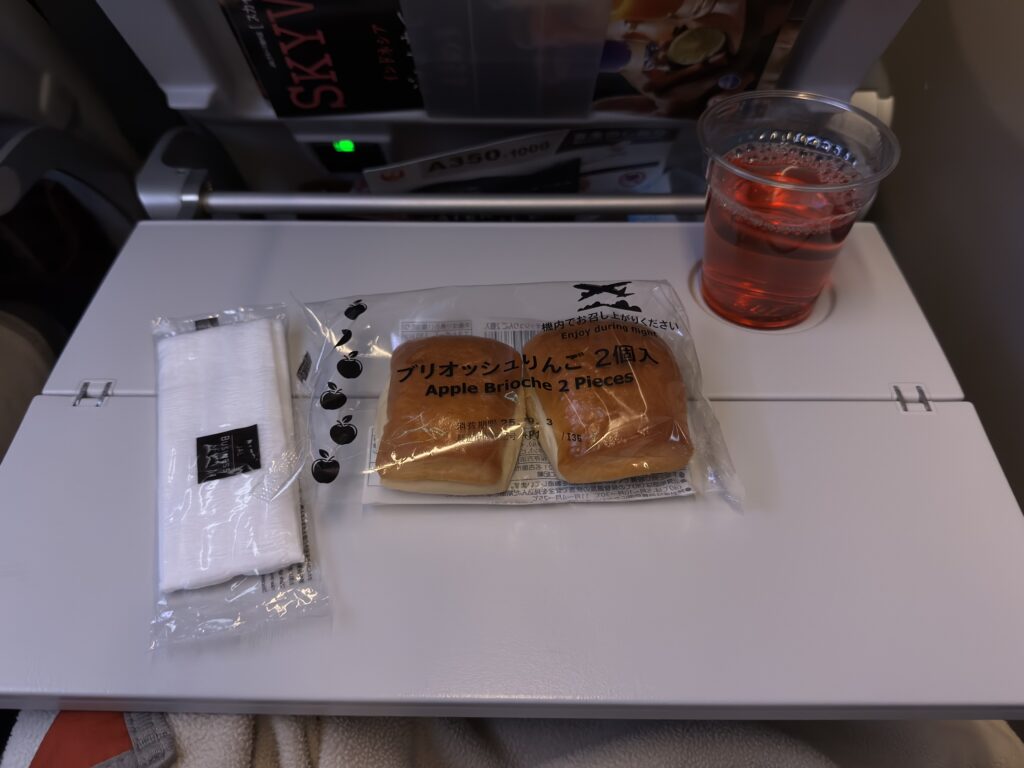
It wasn’t anything huge, but it was good. I also complemented this snack with an onigiri snack of my own that I bought at a convenience store at the airport.
The cabin lights then turned off again, and they would stay like this until the next meal.
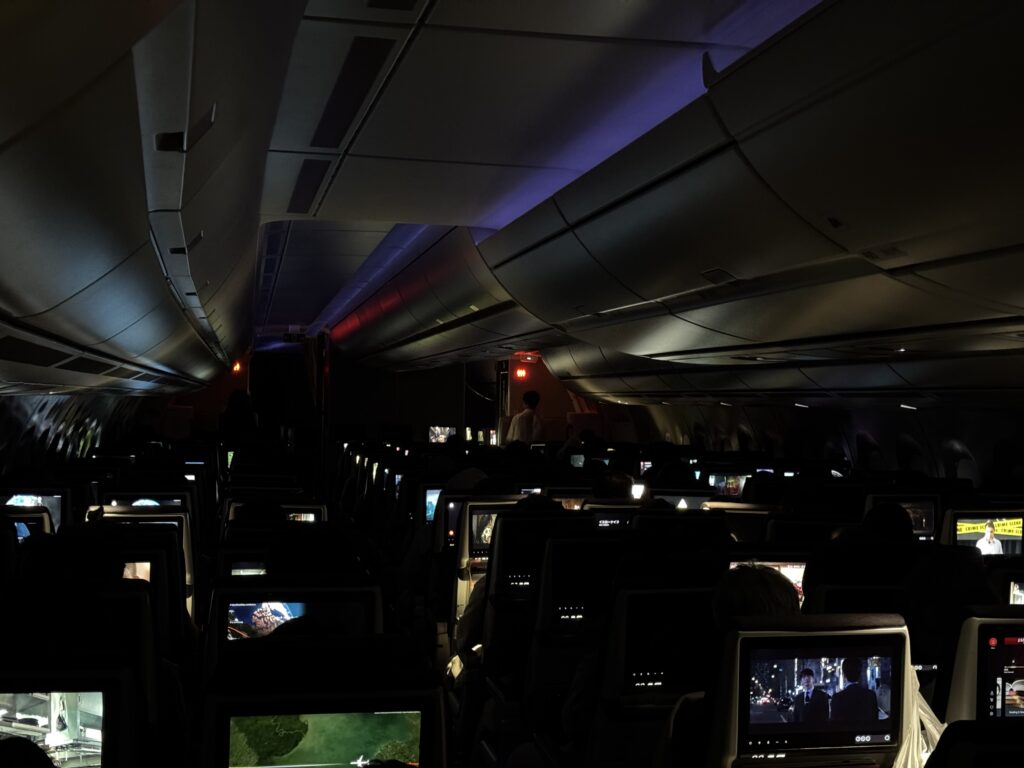
We had about 4 hours to go at this point. I continued to kill time by watching movies, resting, etc.
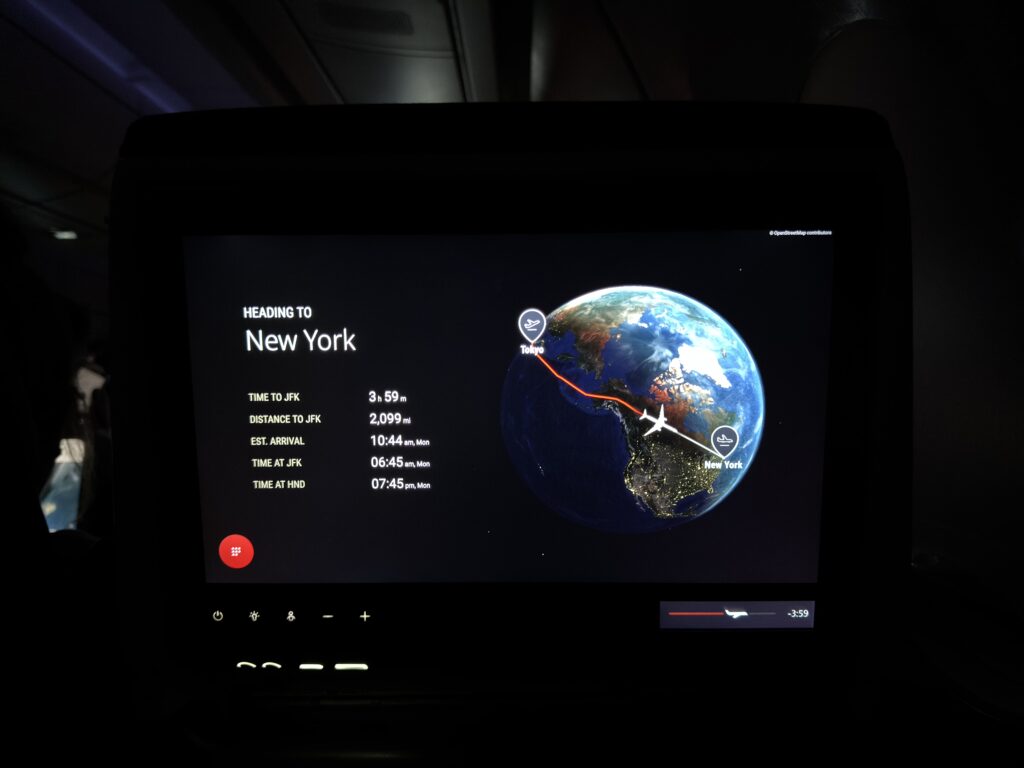
Meanwhile, the sun began to rise:
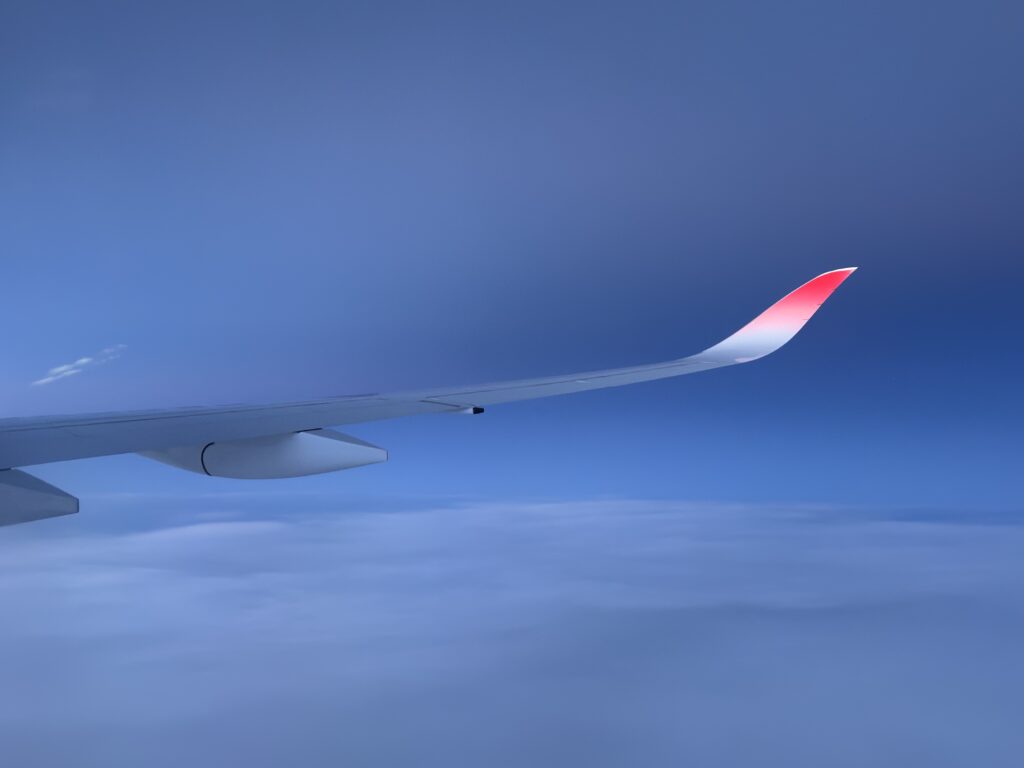
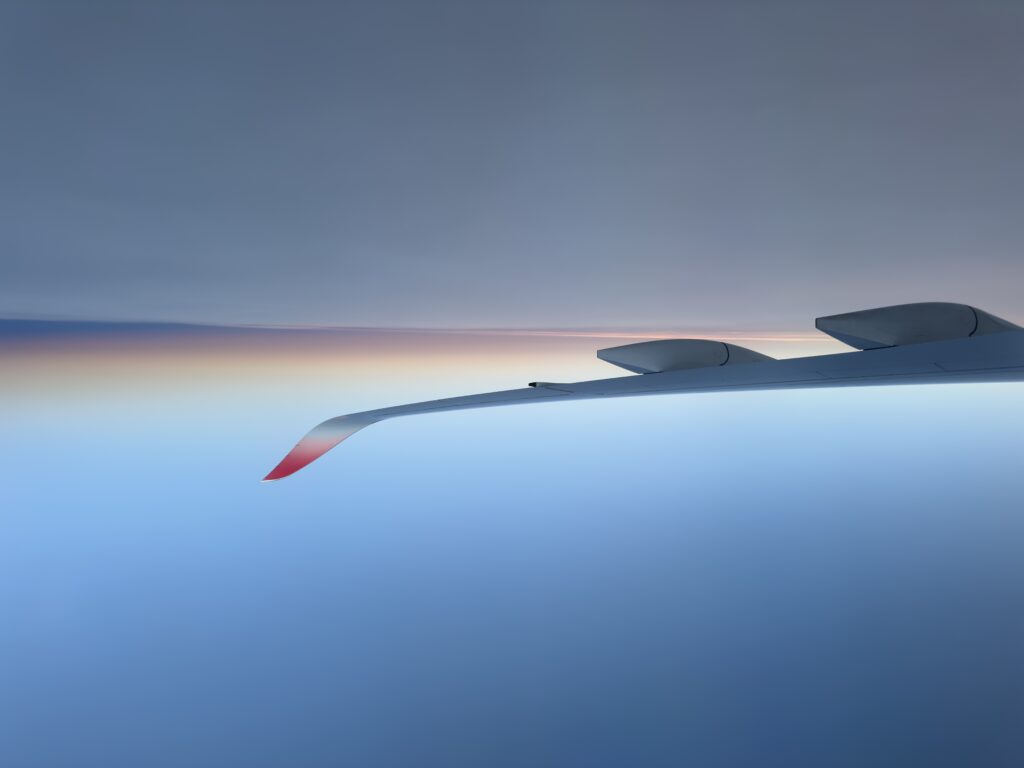
Second Meal, Approach into JFK
The lights began turning on with about 2 and a half hours to go.
My trip to Japan on flight JL3 involved the cabin lights being on for the final 5 hours of the flight, which I talked about in this post. Thankfully, that wasn’t the case on this flight.
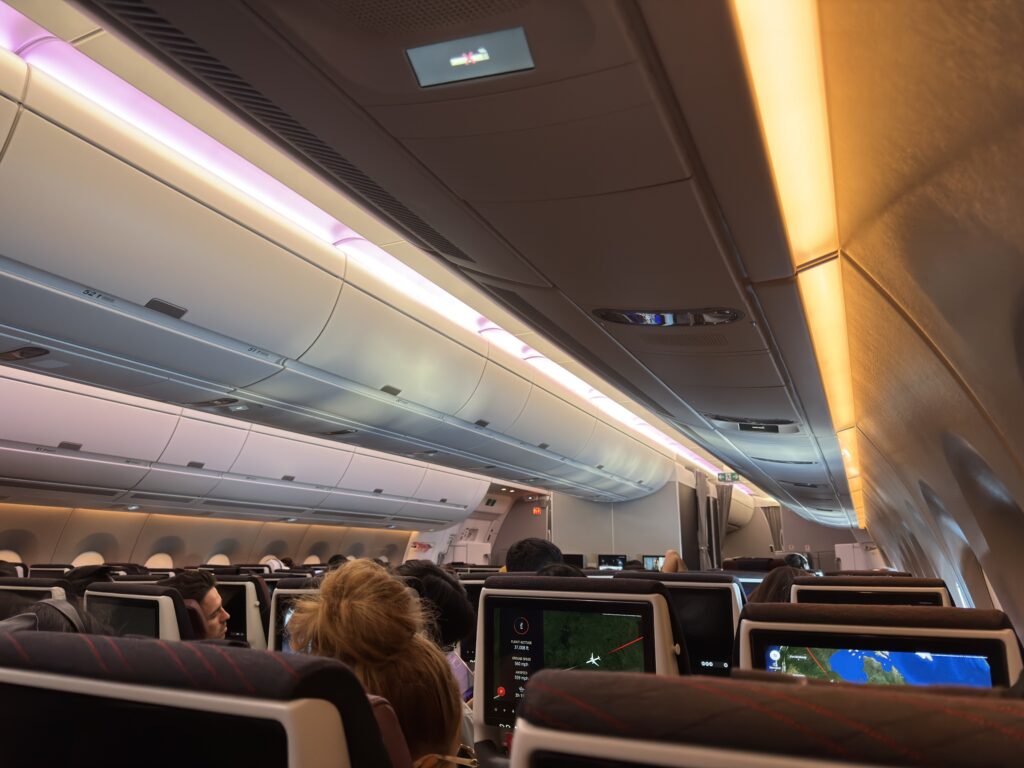
It was time for the second meal, which was just this one option:
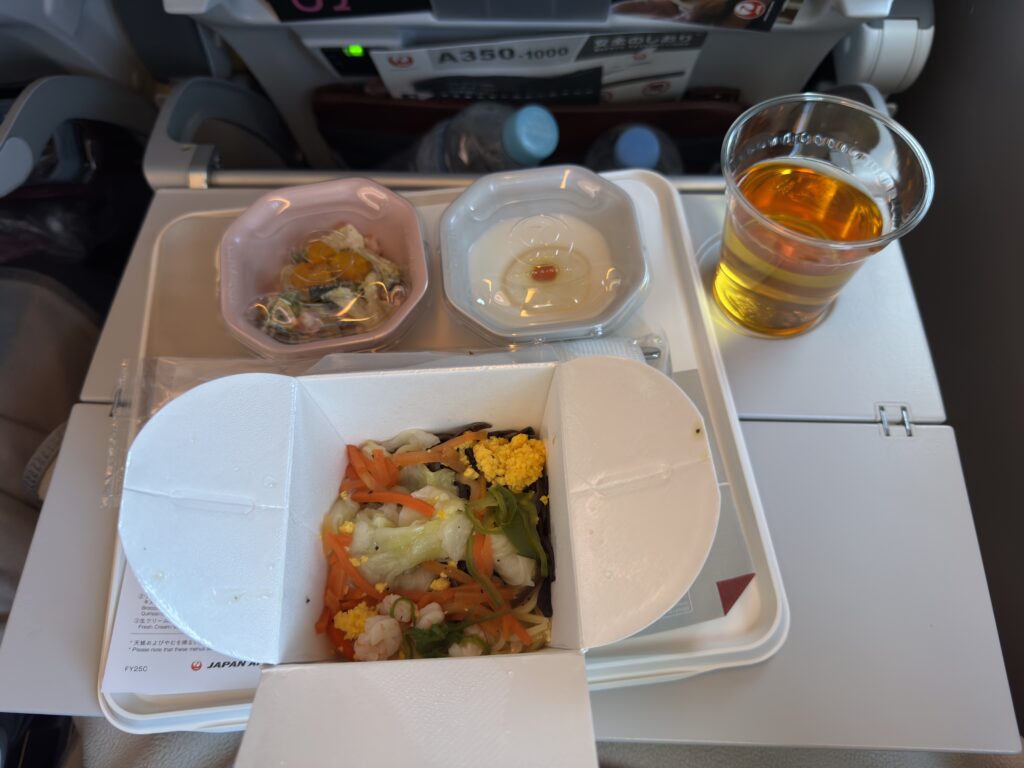
The main dish was a box of “salted fried noodles” with vegetables. This meal was pretty light, considering it was a little after dinner time back in Japan. But oh well, what can you do.
I think this light meal is better suited for flight JL4, where it’s served during the early morning hours in Tokyo or the afternoon hours in New York.
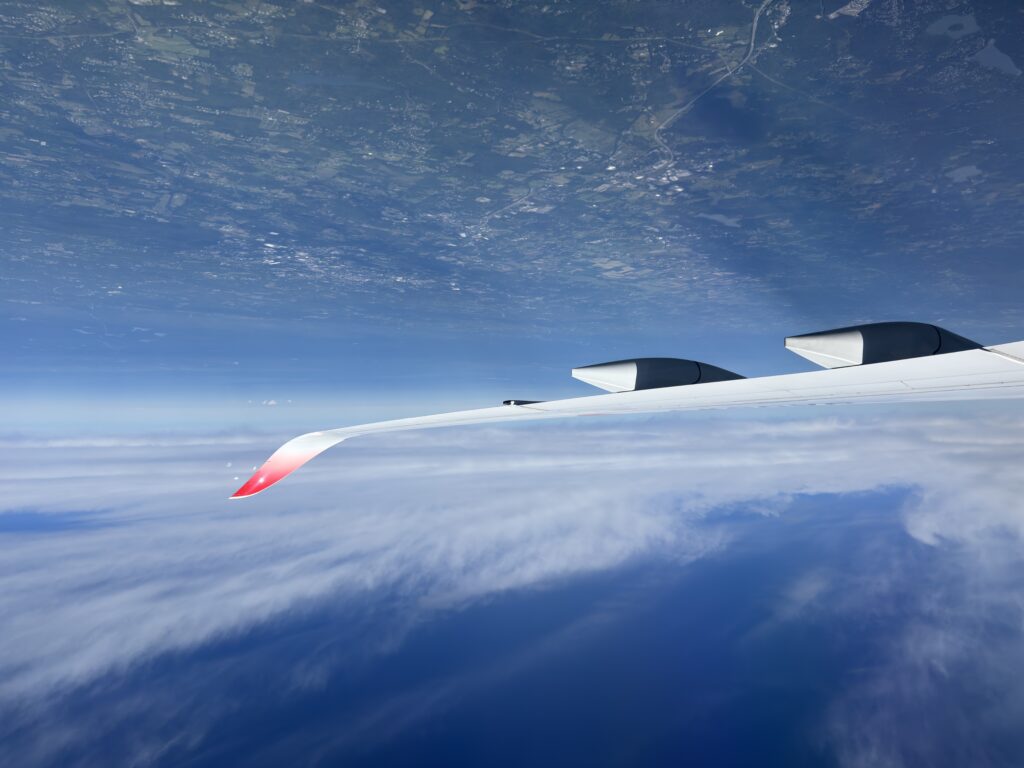
I used the bathroom one last time before we began our approach to JFK. We got some fantastic views of New York City on the way there:
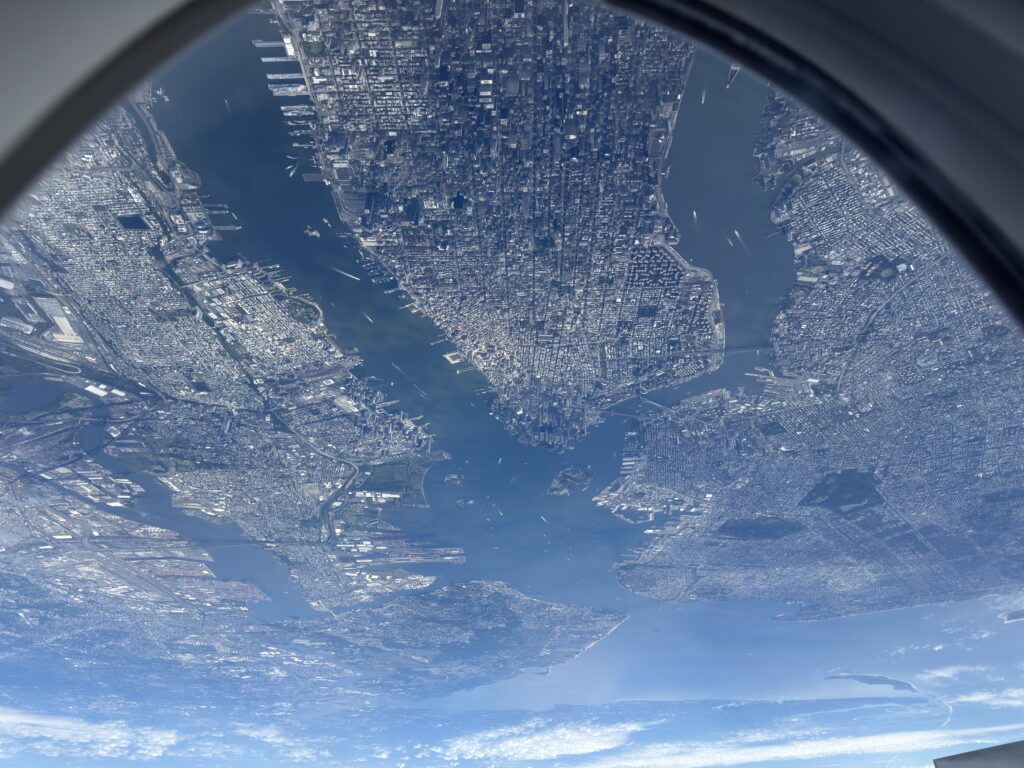
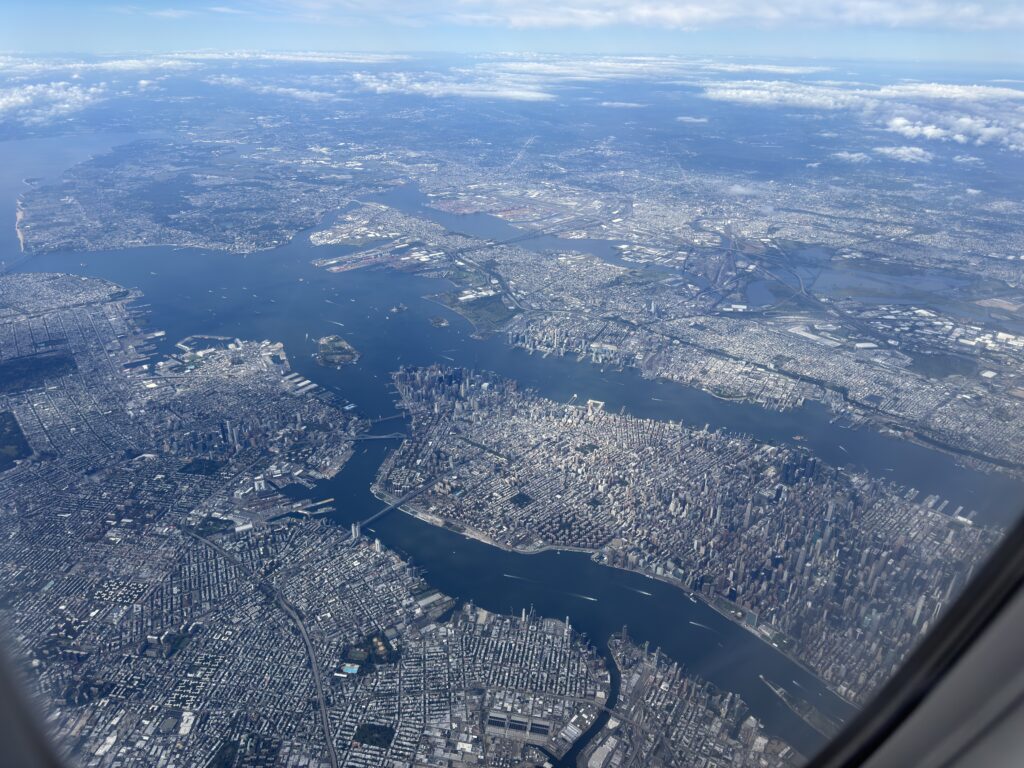
It was funny to think that I’d be arriving in an apartment within the frame of these photos a little over an hour later!
Concluding Thoughts
We landed at JFK about 15 minutes ahead of schedule.
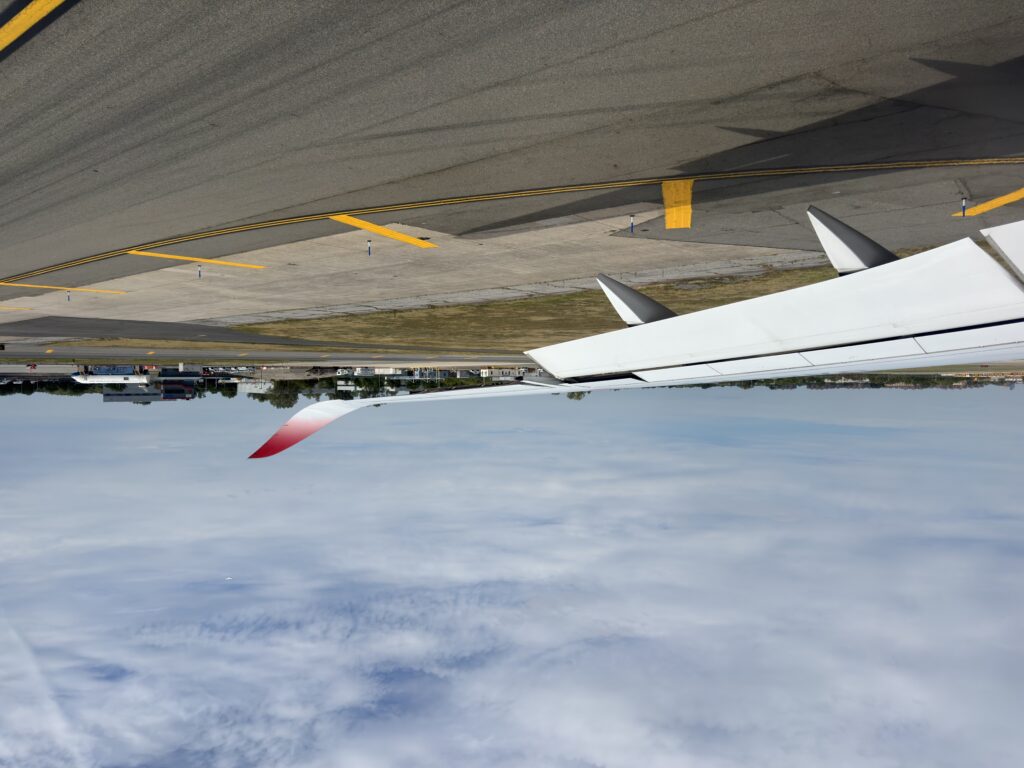
So, how did I like the morning flight to New York versus the evening flight?
- I liked the arrival time in New York. I had pretty much the whole day ahead of me, so I was able to rest from the long trip. On the evening flight, I arrive back at the apartment around 21:00, meaning I have to go right to bed and right back to my daily routine the next morning.
- Jet lag on the first day is rough. I ended up falling asleep for about 4 hours on the couch after I arrived. It’s difficult to sleep on the daytime flight, and you have another full day ahead of you when you arrive.
It’s a mixed bag. I’ll probably continue to stick to the evening flight JL4, but I think each one has both its positives and challenges. At the end of the day, a 19-hour trip door to door is going to be tiring no matter what. Staying hydrated during the flight, keeping a good sleep schedule before the flight, and eating well will go a long way toward fighting jet lag.
All photos taken by the author.

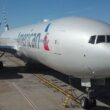
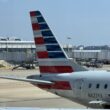
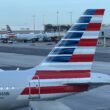
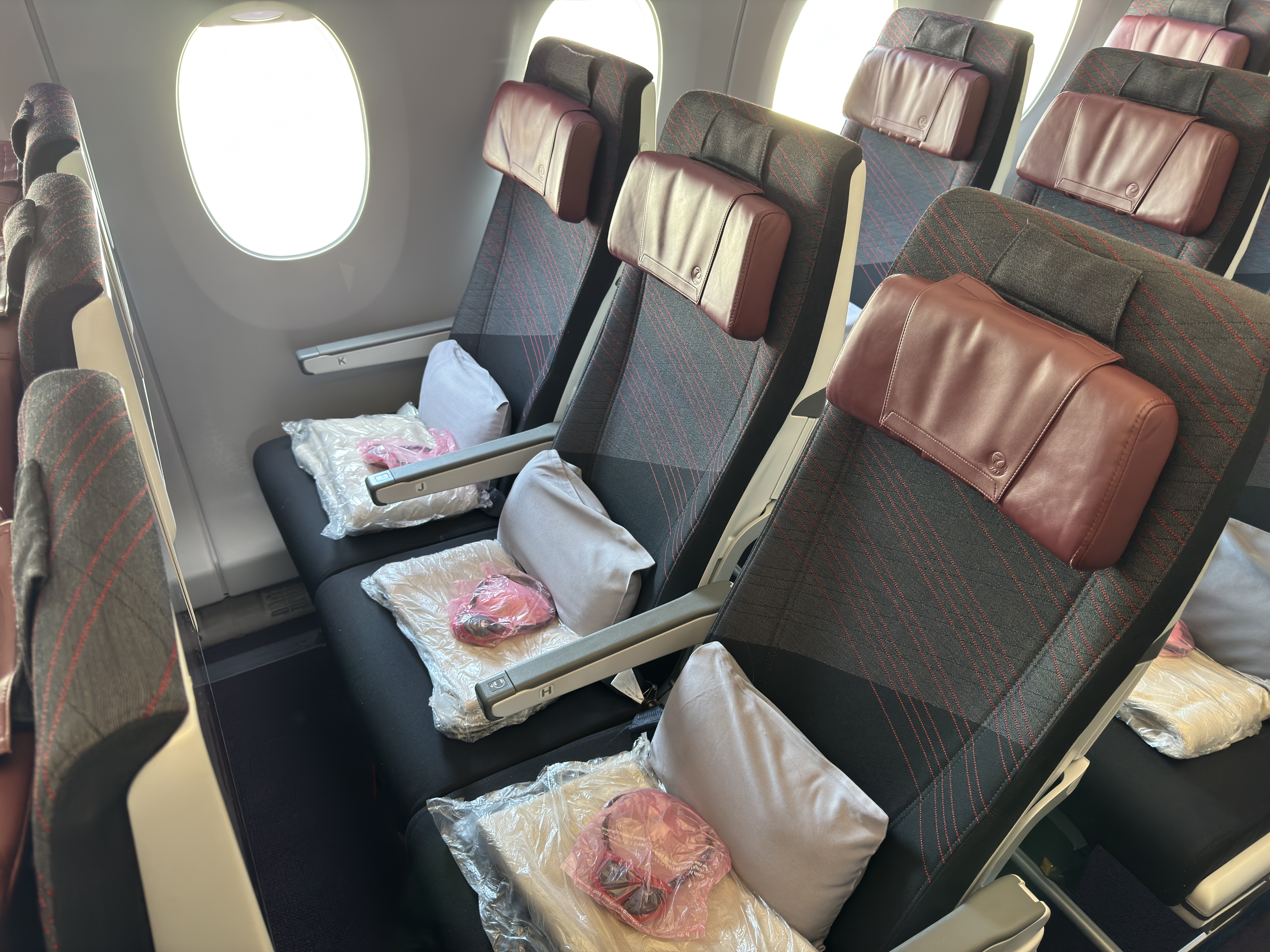
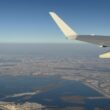
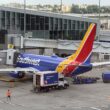
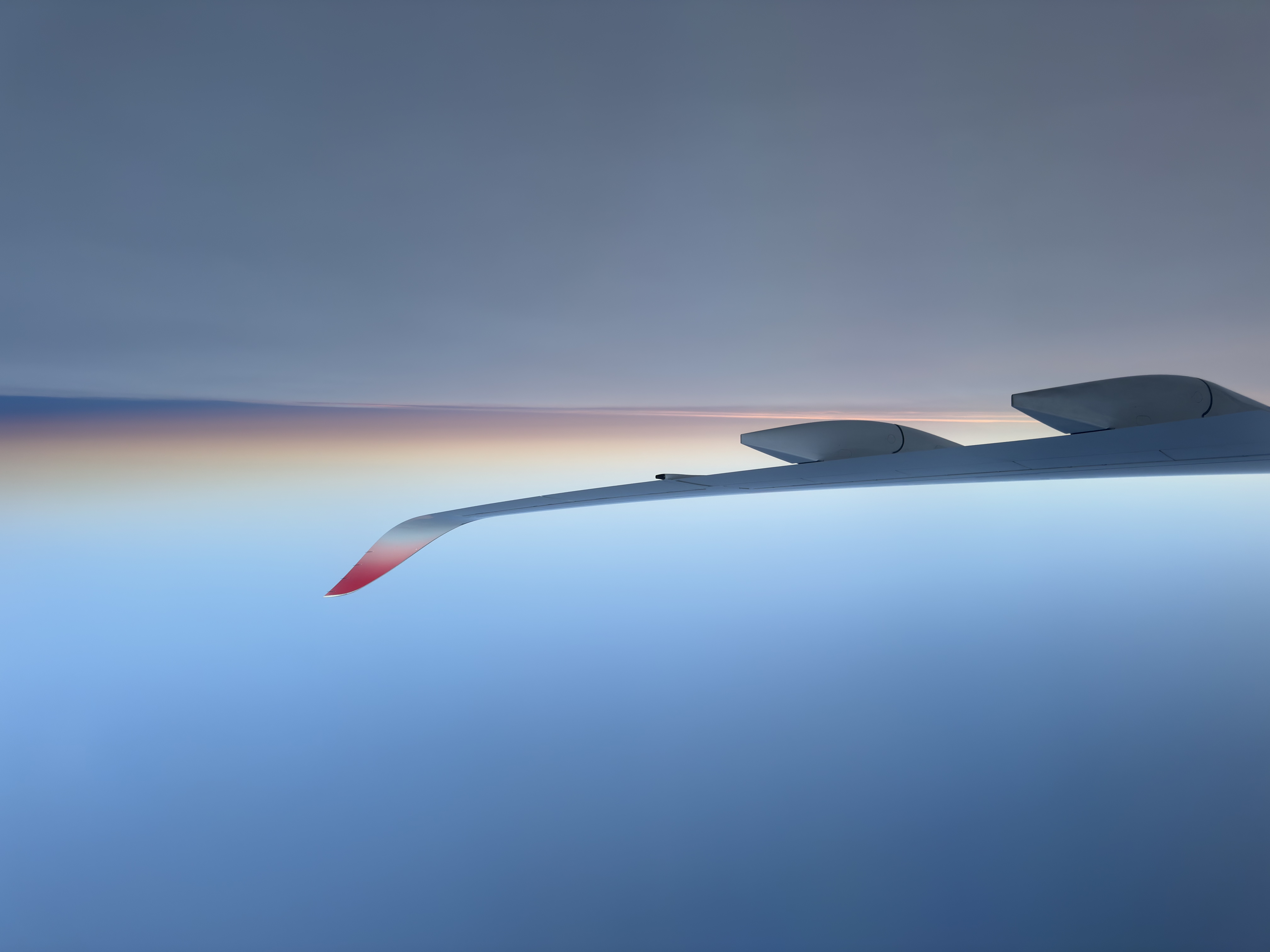
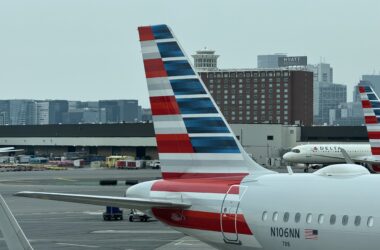
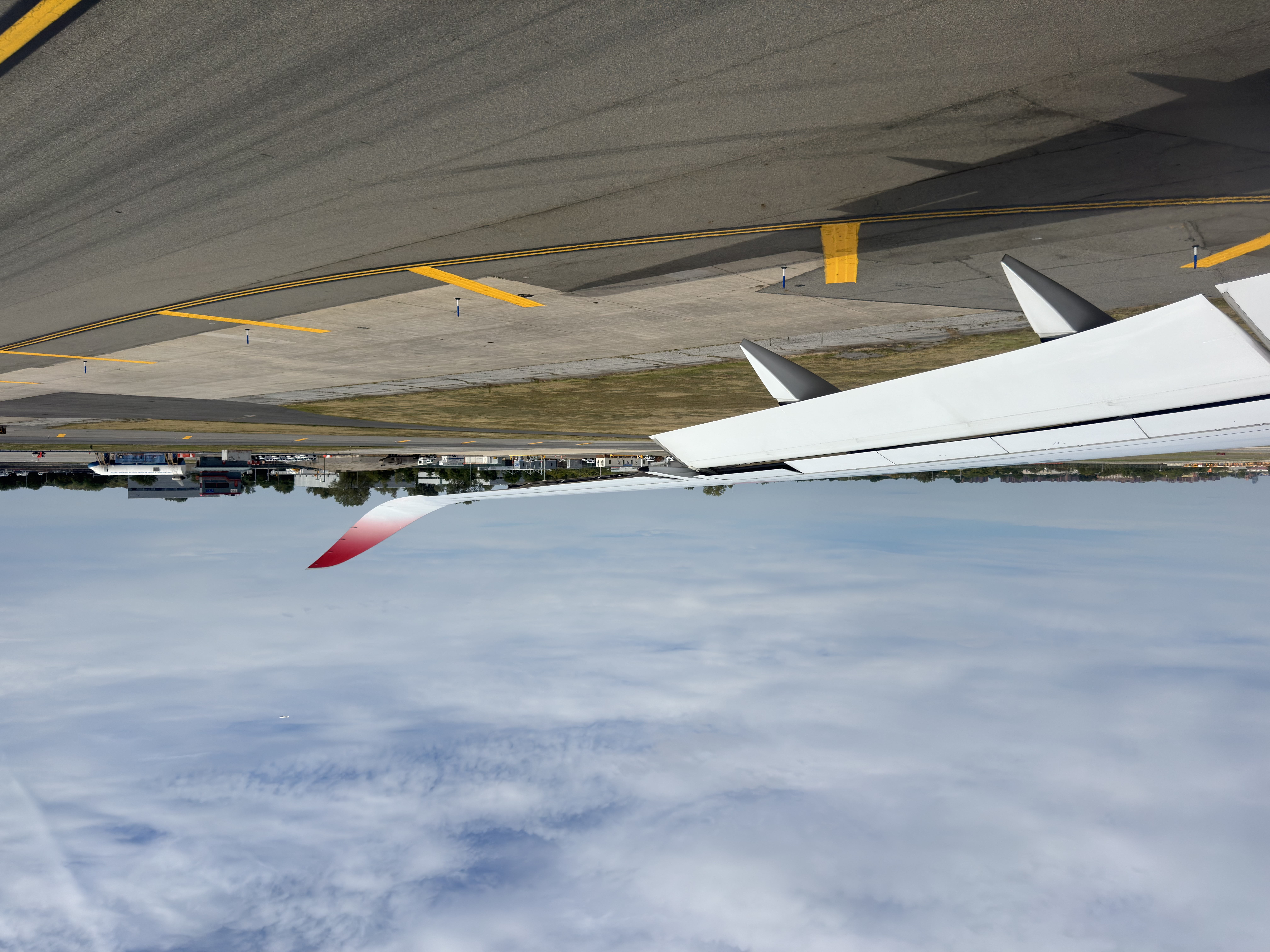
Good review. It’s a long way in economy for sure.